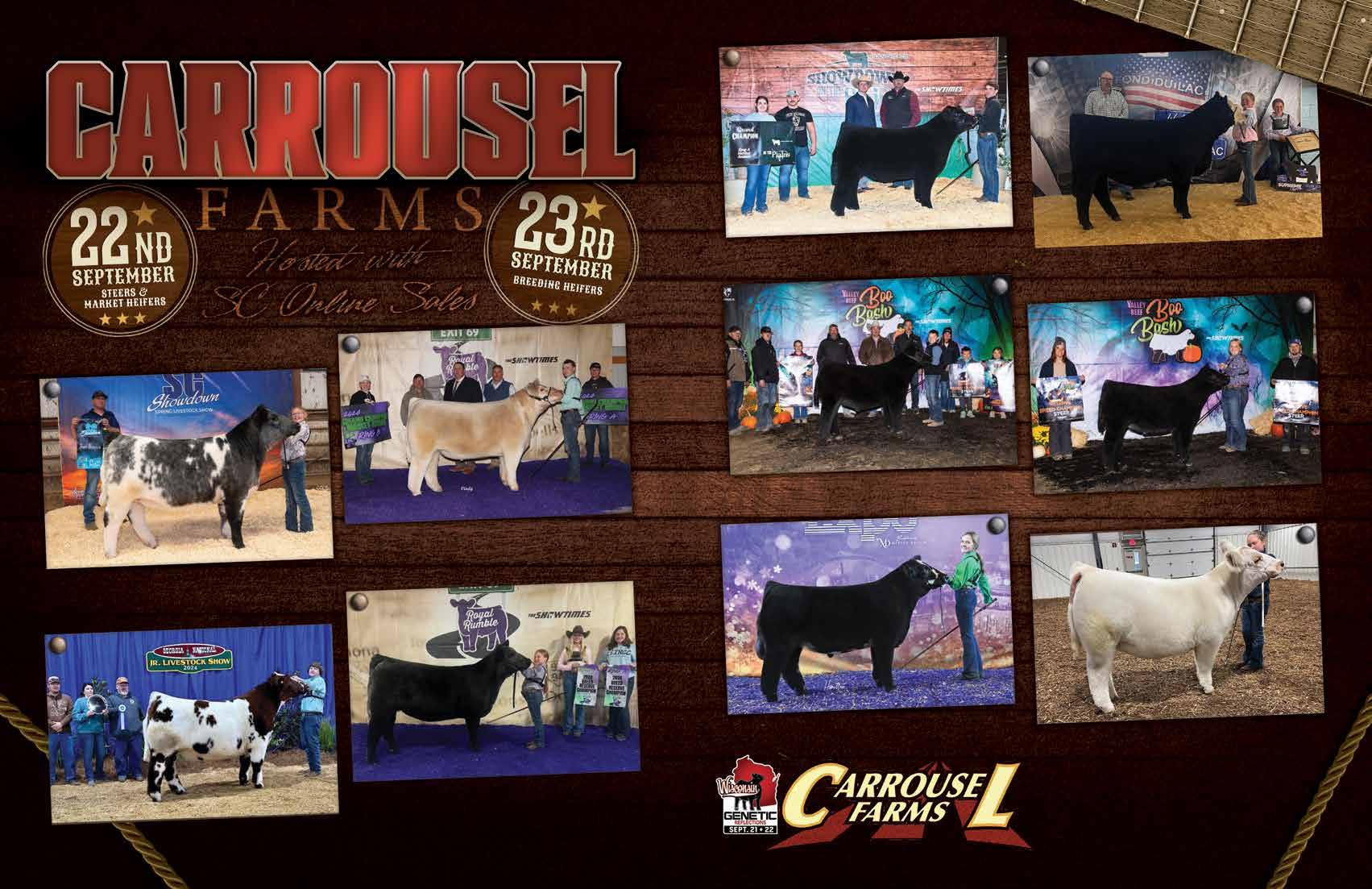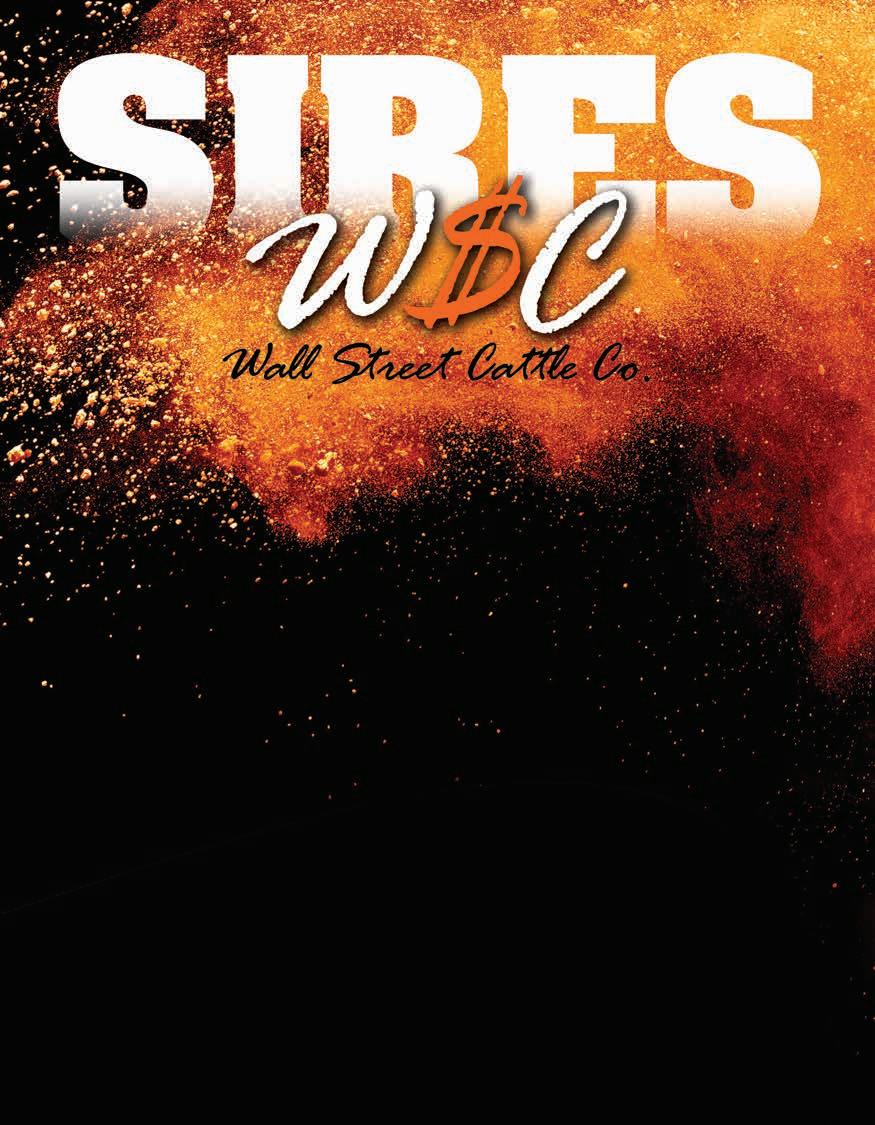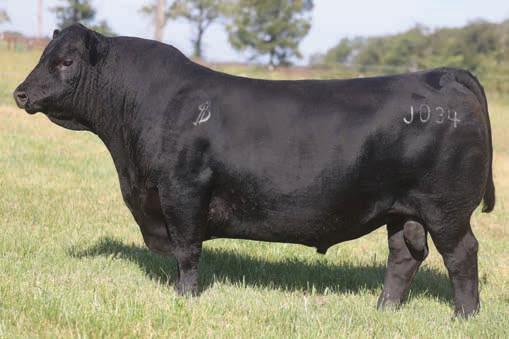
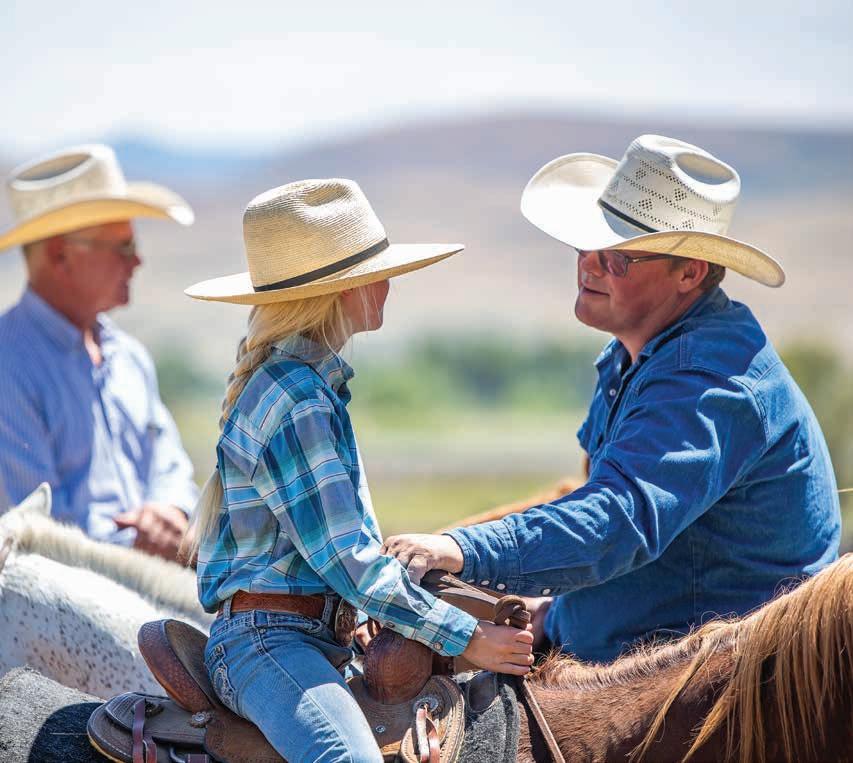









Wednesday, September 18, 2024 - Harrold, SD
Initial bids close at dark. Bid via phone, text, or at steerbidder.com

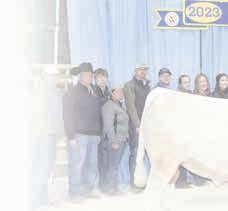
SVY May eld 30H
2022 CWA Supreme Champion | 2023 NWSS ROE Grand Champion Charolais Bull His rst progeny born in the US will highlight this year’s sale!
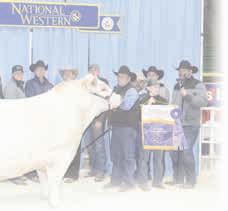






2024 NWSS Calf Champion
Charolais Heifer
Sold on the 2023 Pasture Sale
Congratulations White Rose Charolais & LeDoux family!


2023 NILE Reserve Grand Champion
Charolais Heifer
Sold on the 2022 Pasture Sale Congratulations Mahan family!

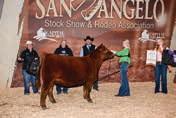
2024 San Angelo Stock Show & Rodeo Grand Champion Red Angus Heifer
Sold on the 2023 Pasture Sale Congratulations Fisher family!




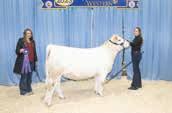
2023 NWSS Division Champion
Charolais Heifer Sold on the 2022 Pasture Sale Congratulations Ga ney family!


2024 AICJA Division IX Champion Heifer Sold on the 2022 Pasture Sale Congratulations Groseclose family!

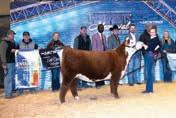
2024 Jackrabbit Memorial Jackpot Show 3rd Overall (A) & 5th Overall (B) and 2024 SDJHA Field Day Grand Champion Sold on the 2023 Pasture Sale Congratulations Altena family!

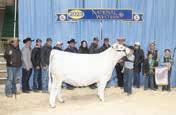


2023 NWSS Reserve Grand Champion
Charolais Heifer
Sold on the 2021 Pasture Sale Congratulations Ho man family!

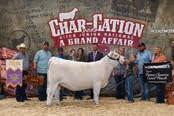
2022 AIJCA Reserve Grand Champion Owned Heifer Daughter of TR Ms Berkly 4711, a past Pasture Sale purchase Congratulations Willet family!



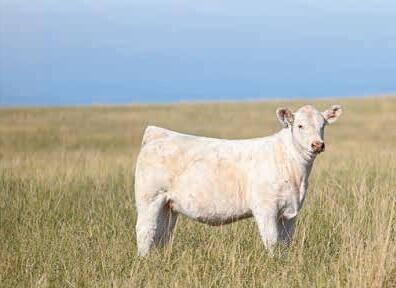
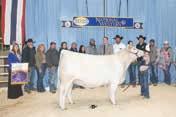

2022 NWSS Grand Champion
Sold on the 2020 Pasture Sale Congratulations Krebs family!



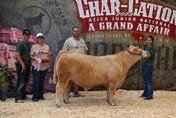
2024 NJAS PGS Division I Champion Class Winner Owned Heifer Show Congratulations Scott family!






PROTECT YOUR BOTTOM LINE AGAINST REDUCED APPETITE AND WEIGHT LOSS.

Stress happens every time cattle are handled, transported or commingled. Cortisol levels increase from stress impacting appetite, health and weight gain. Studies demonstrate FerAppease® reduces the impact of stress on calves treated:*
• Reduced cortisol levels
• Improved appetite
• Increased weight gain

• Improved immunocompetence
• Improved health response, better recovery
• Decreased mortality
*Conducted by Dr. Reinaldo F. Cooke, Texas A&M University
HEALTHIER & HEAVIER CALVES = MORE PROFIT
CONTACT YOUR VETERINARIAN OR ANIMAL HEALTH PROVIDER TODAY.


Thanks for joining us! We are a free, premier livestock publication featuring and serving seedstock and commercial beef producers nationwide. Raising cattle is so much more than a hobby; it is our livelihood and our passion. We understand that, and in every issue want you to see not only incredible cattle, but also relatable, entertaining, and informative editorial features for the producer with 5 or 500 head.
To us, you are more than reader or advertiser; you are a beef producer. We are committed to doing our best for you, every day. Please feel free to communicate with us, your input is appreciated. The Stockman (ISSN 2694-1740), Vol. 6, No.
BILL SCHERMER, Owner/Herd Consultant
641.425.2641 |

Bill and his wife, Nancy, have made their living in the cattle industry. He has provided marketing services for purebred and commercial breeders since 1970. Schermer Angus Cattle continues to be active in the NJAA and raises quality cattle near Clarion, IA. As owner of The Stockman, Bill leads by example providing producers with the highest level of customer service.
CHERYL KEPES, Assistant Editor
417.766.0990
cheryl@stockmanmag.com

Working for The Stockman is the perfect combination of two of Cheryl’s favorite things: writing and cattle. Cheryl has decades of experience as a professional writer. She finds great joy in sharing stories about people in the agricultural industry. Cheryl’s family raises registered Angus, Red Angus, and Simmental cattle in Fair Grove, MO.
KIM BANKS, Graphics
507.530.0914
kkbanks@frontiernet.net


Makayla serves as editor, graphic designer, and manager of The Stockman. Her focus and passion continues to provide high quality service and original promotional materials to cattlemen. She and her husband, Jared, raise their four kids, and together they run their family operation, JMF Herefords and SimAngus, near Morris in west central MN.
SARAH HILL, Editorial Writer
307.274.0419
sarahhill1007@yahoo.com

Cheryl Kepes
Sarah Hill
Justin Fruechte
Dr. Vince Collison Kirk Lynch
Kim is a graphic designer with many years of design experience. Producing creative marketing materials to help others look their best is what she loves doing the most. She and her husband, Kevin, along with their son, raise grain and have a small commercial cow/calf and feeder operation on the family farm near Lynd, MN.

Sarah lives on a small hobby farm near Arlington, SD, with her husband, Braeton, and their three daughters: Harper, 8, Vayentha, 5, and Aurora, 1. She grew up on a Missouri dairy farm and has an Agricultural Journalism degree from the University of Missouri. Sarah enjoys baking, reading, and gardening.
MARIA OPHEIM, Social Media Manager
507-828-1374
riawbr@gmail.com

to Makayla Flower, 1530 10th St. NW Holloway, MN 56249.
Maria, her husband Cade, and daughter Tawnee, of Mound City, S.D. currently reside on their fifth generation commercial & Limousin cattle and grain operation. Maria also works as a R.N. She is excited to promote producers through The Stockman’s social media platforms!
TY BAYER
715.573.0153
tcreds@gmail.com

Ty works alongside his family in their purebred operations, Country Lane Farm and TC Reds near Ringle, WI. An advocate for youth programs and dedicated cow/calf man, he is excited to help producers merchandise their cattle.
RON HINRICHSEN
785.770.0222
rlangus@bluevalley.net

For the past 30 years, Ron, his wife, Lynne, and their two children have owned and operated Hinrichsen Ranch, a registered Angus ranch in Westmoreland, KS. He has an extensive background in the agricultural industry and is excited to put it to work for each of his customers.
BRIGHAM AND MEGAN STEWART
785.747.8028
megancollisondvm@gmail.com

Brigham works alongside his parents at Mid Continent Farms, their large, multi-breed cow/calf operation in Kansas. Megan graduated from ISU as a DVM in the spring of 2021 and is a big part of her family’s Angus herd and Veterinary Clinic in Iowa.
STEVE WOLFF
701.710.1574
swolff318@yahoo.com

Steve is a third generation Hereford breeder - his family has been raising Herefords since 1951. He offers bulls by private treaty every year and has a heifer sale every fall. Steve also enjoys traveling to sales and shows whenever possible and likes camping as well.
BRANDON CREAMER
970.596.4965
creamer b 150@hotmail.com

Brandon owns Lazy JB Angus with his parents and sister in Montrose, CO. Raised in the cattle industry, he has a true passion for it and loves marketing quality cattle throughout the US.
JAN FORD
800.693.8048
jford17879@aol.com

With her passion for agriculture, Jan brings over 35+ years of advertising sales experience in the beef industry. She and her late husband Norm had a commercial Angus cow herd and grain operation near Tipton, IA, which her sons still manage today.
LORA HUTCHINS
615.293.3695
loralea1172@gmail.com

Lora owns and operates Destiny Angus Farm with husband Brian and daughter Morgan in Charleston, IL. They have raised and shown cattle successfully on the national level for several years. They also have owned a production herd with as many as 200 registered cows.
MARK SULLIVAN
816.304.0050
marksullivancattle@gmail.com

Mark Sullivan is a familiar face to many having worked for Sullivan Supply for many years. Mark brings many years of experience to The Stockman. Mark and his wife, Linda, and two children, Erin and Leo, live in Woodbine, Iowa, and have a small herd of Charolais cattle.
BARRETT SIMON
316.452.1792
barrett.simon8@gmail.com

Barrett comes with deep roots in both the Angus and Red Angus breeds with a growing base of customers marketing Continental based cattle as well. As an auctioneer, he represents many seedstock producers throughout the central plains. His direct ties to the commercial cattle industry are sure to be a benefit to customers of The Stockman.
CARTER WARD
carterward79@gmail.com
816.261.0891

Carter resides in Plattsburg, MO, with his girlfriend, Mandi, where they help run Ward Brothers Livestock with Carter’s family - their primary focus is Angus show cattle. Carter is also a partner in Campbell/Ward show cattle that specializes in the Hereford breed.




Sierra
Froelich Ranch, Selfridge, N.D.,
Meats by Linz
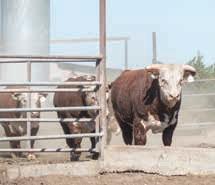
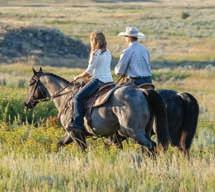
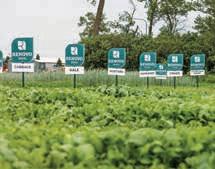


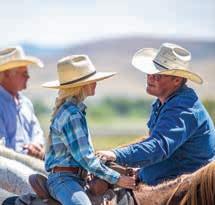

Our son Tayton wanted to bring a market steer to the county fair this year. Not just any market steer, this particular steer was bred and owned by him. He grew well over the winter eating out in the lot, but as soon as we got him in the show barn this spring, he refused to eat out of a feed pan. We tried different feeds and different types of feed pans but he still boycotted eating. My husband and I tried telling our 9-year-old that there was a pretty good chance that he wouldn’t make it to the fair because he wasn’t gaining weight like he needed to. We suggested (more than once) to kick him back into the lot and focus on a different project. But Tayton insisted that we keep trying.
So we found a few more feed products to try and eventually we got the rascal to eat something. He slowly turned around, and to our surprise, we ended up hauling him to town for the fair. What an accomplishment! Tayton was so proud to have him there. The day came for the beef show and Tayton was so excited to just be there to participate in the show. But then another surprise came our way and Tayton won Reserve Champion Market Steer! His grin from ear to ear is something I will never forget - his perseverance and determination had really come through for him. We are incredibly proud of him for sticking with his project, even when things were really tough. Just when I think I’m in the ‘teaching’ position as a parent, I often find that our kids are the ones teaching me. I can almost smell the scent of fall in the air. It’s my favorite season! Our garden is flourishing and I’m so excited for canning and preserving all the produce this fall. In the meantime, we’re clinging to these last few warm days of summer.
publication date
October 1, 2024
materials due
September 10
November 1, 2024 October 10
December 1, 2024 November 10
January 1, 2025 December 1
February 1, 2025 January 10
March 1, 2025 February 10
April 1, 2025 March 10
May 1, 2025 April 10
August 1, 2025 July 10
September 1, 2025 August 10




rate/issue
full page $800
half page $450
third page $350
reference card $80
double card $300
ring service call for a quote


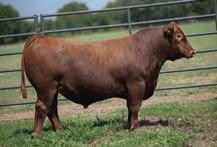
BYU FULLBACK 3335
Sire: PIE FULLBACK 7005
MGS: C-BAR RJ SENECA 8370F
This son of PIE Fullback 7005 is big ribbed, easy keeping, and o ers the herd bull credentials!
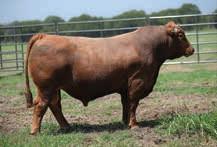


BYU KING OF THE COWBOYS 3344
Sire: 4MC KING OF THE COWBOYS 706
MGS: RED U2 RENDITION 340D
One of several sons sired by the $210,000 valued 4MC King of the Cowboys 706 that will sell!


BYU FULLBACK 3361
Sire: PIE FULLBACK 7005
MGS: WCR UNCHAINED 3332A
The legacy of PIE Fullback 7005 continues! Another impressive set of sons will highlight the sale!
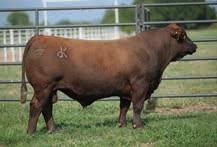


BYU KING OF THE COWBOYS 30116
Sire: 4MC KING OF THE COWBOYS 706
MGS: 9 MILE LIKEABLE 8205
Power, substance, and real world performance with an impressive 112 WW Ratio!

BYU FRANCHISE 3321
Sire: 9 MILE FRANCHISE 6305
MGS: TKP ALLSTAR 7047
This powerful son of the $105,000 9 Mile Franchise 6305 o ers an incredible phenotype!

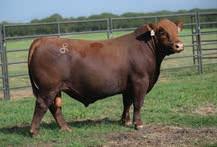
BYU BLOCKADE 3445
Sire: 5L BLOCKADE 2218-30B
MGS: BUF CRK FINAL ANSWER W004
A big, stout, rugged son of 5L Blockade 2218-30B that is ready for heavy service!


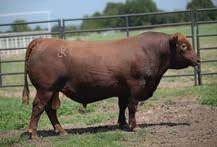
BYU FRANCHISE 3443
Sire: 9 MILE FRANCHISE 6305
MGS: PIE ONE OF A KIND 352
A big spread herd sire option that spreads from 72 lbs. to 815 lbs. of weaning weight performance!
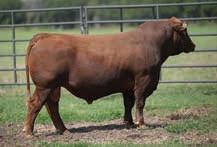
BYU ALL STAR 3333
Sire: BYU ALL STAR 0362
MGS: PIE FULLBACK 7005
Larger framed, growth oriented herd sire prospect that is loaded with shape and dimension!

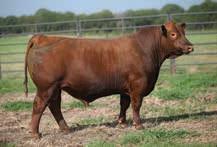
BYU PLATINUM 3322
Sire: EXCC PLATINUM 020
MGS: PIE FULLBACK 7005
Elite calving ease option that is backed by a young and productive daughter of PIE Fullback 7005!

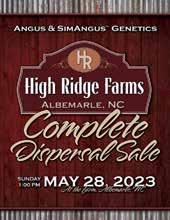
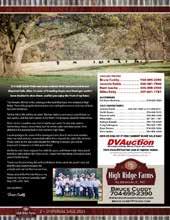

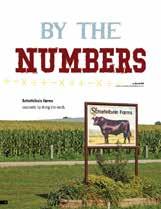
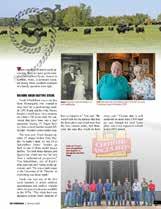
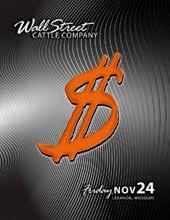





REG# 20047598
As much power and performance in one package as you will find anywhere within the Angus breed. The calves by Respect exhibit uniform thickness and shape, stout bone, and breed leading performance. He lands in the top 2% for weaning weight and top 4% for yearling growth with well above average carcass numbers. If you are looking for an option to power up your calf crop, be sure to check out Respect.
$50/STRAW
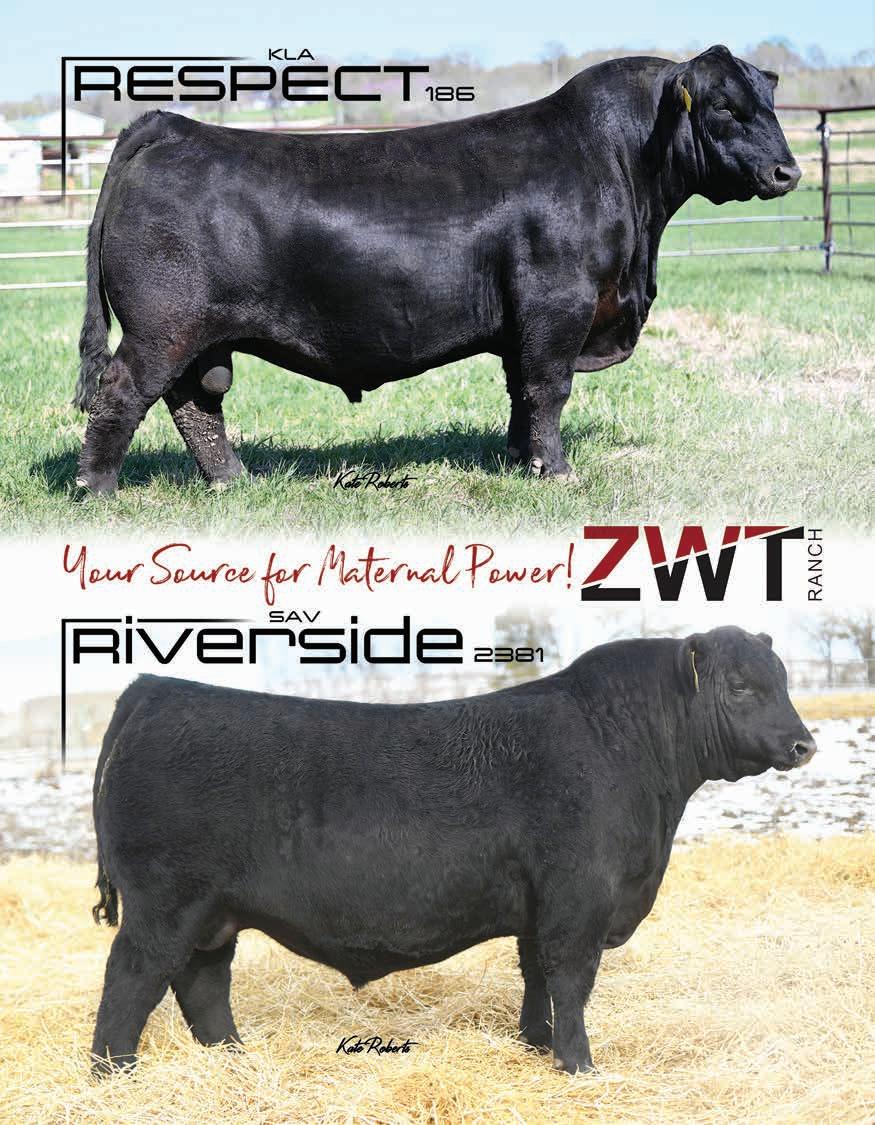
REG# 20480732
His first calves are on the ground and exceed our expectations! They come easy and take off quickly. A true calving ease bull that is heifer friendly. His maternal brother was the second top selling bull at the 2024 SAV Production Sale. Riverside is also a full brother to SAV Downpour 8794. His headliner Pathfinder dam has a nursing ratio of 7/104. Make Riverside a choice for your heifers this fall!
$30/STRAW
REG# 20304546
Blueblood is widely regarded as the most powerful son of the highly acclaimed EA Rose 918. He was the topselling bull of the 2023 ZWT Fully Loaded Sale to Shady Brook Angus, McCurry Angus, and Pleasant Hill Farm. Blueblood exhibits tremendous length of body on a wide base while maintaining exceptional structural soundness. Numerous breeders have raved about the overall balance and completeness of this bull now in residence at Shady Brook Angus. Use him to bring the Rose 918 influence to your cow herd.
$30/STRAW AT BREEDER LINK
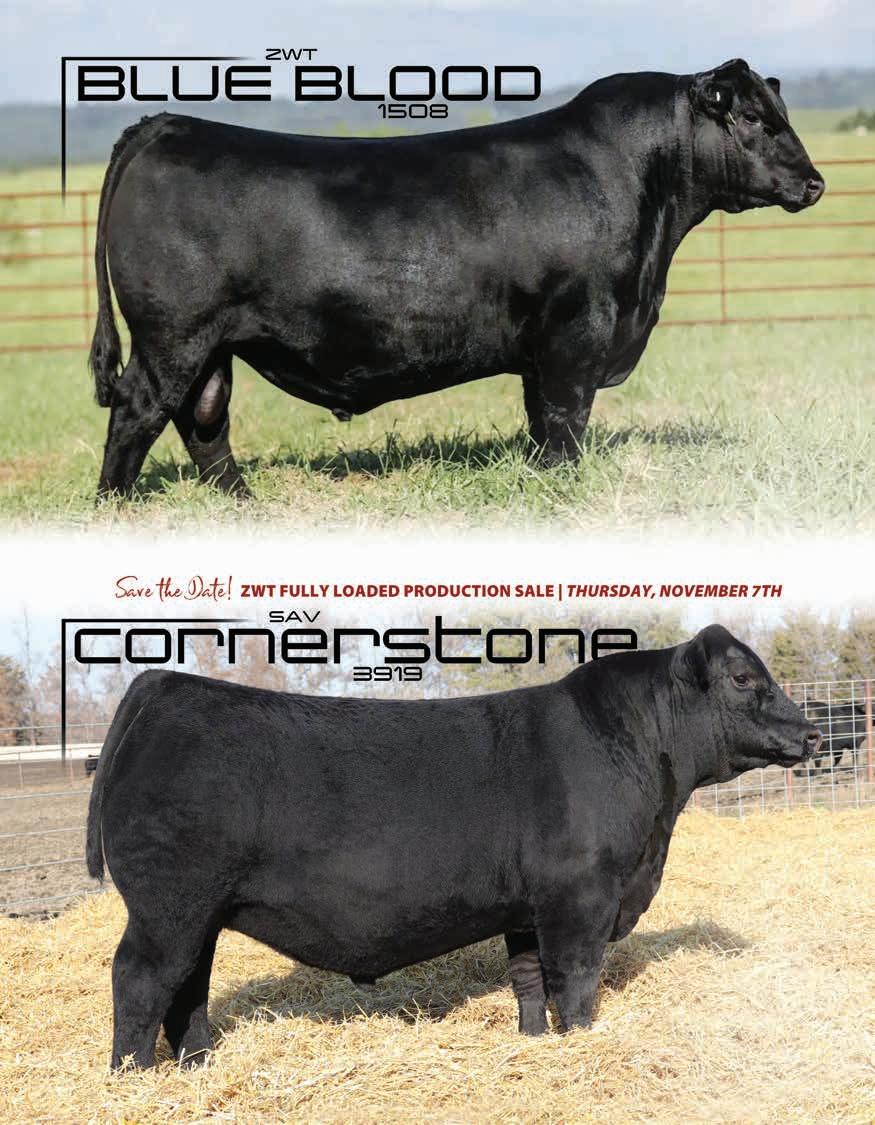
REG# 20761392
An unmatched combination of phenotypic balance, disposition, foot quality, maternal, and muscle. His dam is often referred to as a true ‘Cornerstone’ of the SAV program. She currently has 50 daughters in their program. It is worth the trip to ZWT just to see this outstanding young herd sire in the flesh.


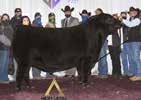


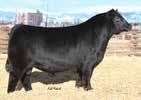
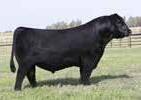





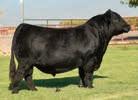


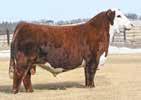


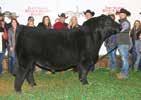





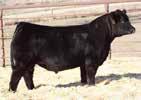
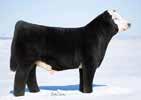





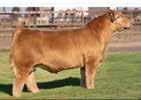















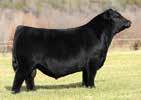


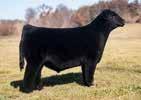

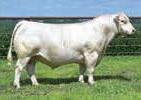






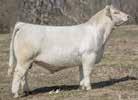
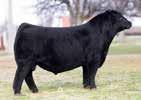


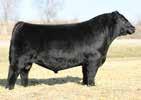

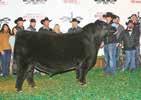

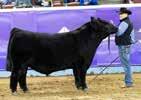

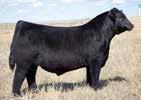




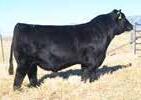





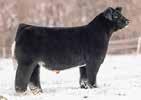
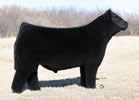
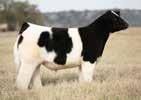
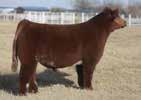
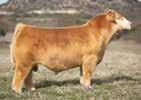






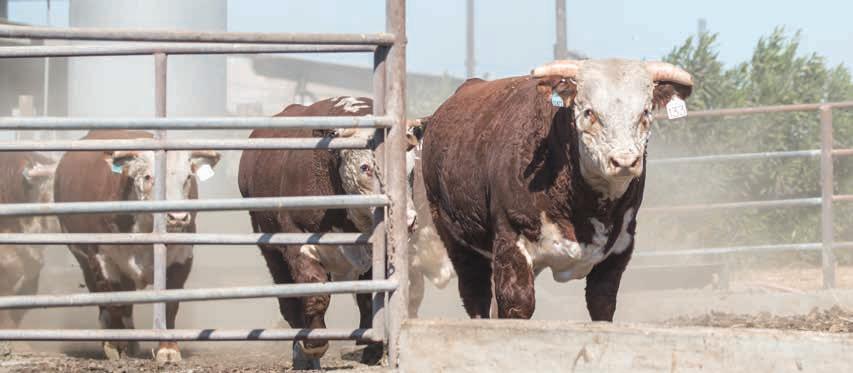
Sierra Ranches consistently looks for new avenues to strengthen and sustain its operations.
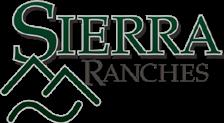
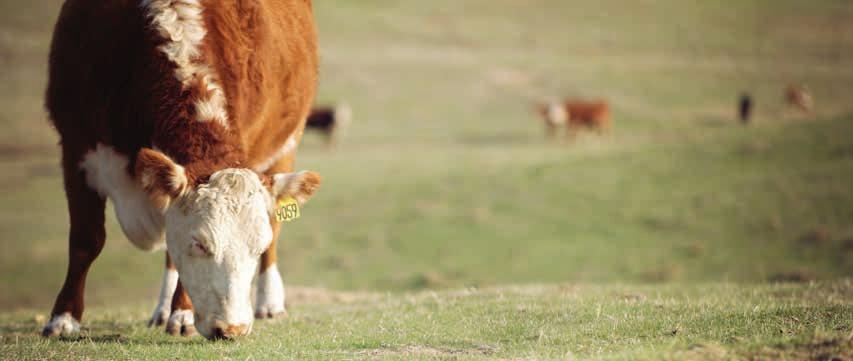
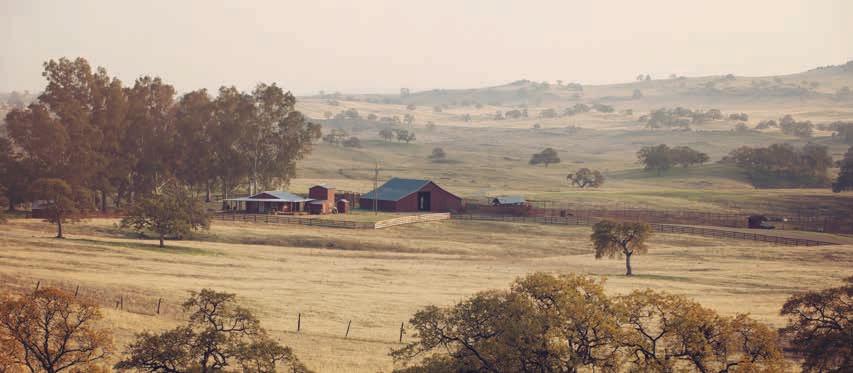
ierra Ranches calls the heart of California home. Surrounded by fertile farmland, lush hills, and expansive valley floors, Sierra Ranches’ business operations are as diverse as the environment in which they thrive. Tim and Kara Coleman
S and their family have spent decades building purebred and commercial cattle operations, as well as cultivating walnut, almond, and wine grape crops in Modesto, Calif.
Sierra Ranches operates purebred Angus and Hereford herds as
well as a commercial herd focused on producing black baldie calves. Though each segment of the cattle operation excels on its own, Sierra Ranches’ cattle herds work in harmony to achieve greater success.
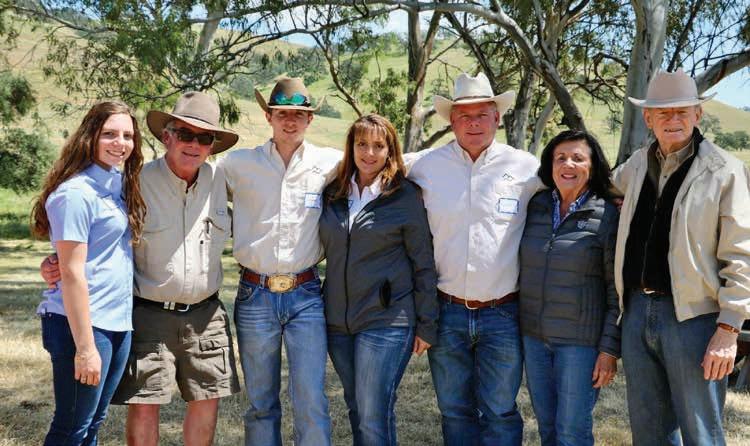
“The practicality of operating a cow/calf operation has allowed Sierra Ranches to breed our purebred herds with the commercial cattleman’s interest at heart. Our emphasis over the last several years in particular has predominately been focusing on birthweights, weaning weights, and CHB$,” Tim Coleman said.
Tim grew up on his family’s purebred Angus operation - Vintage Angus Ranch in Modesto, Calif. He started Sierra Ranches in 1994 with an emphasis on building a commercial cow/calf program. In 1998, Tim and Kara got married and started managing the operation together.
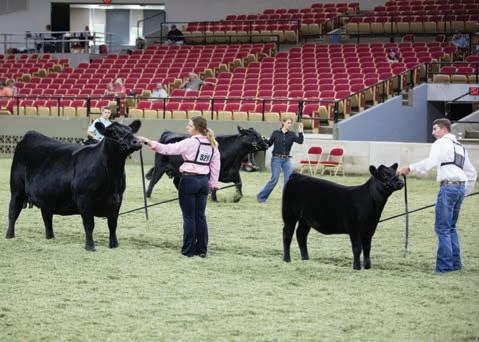
Though they have had ranch employees through the years, the Colemans now run the operation with the help of their son, Tyler, and their cowman, Treyton Baker. They also utilize local cowboys for additional day help.
The Colemans’ daughter, Kathryn, helps at the ranch when she has a break from her international agriculture business studies at Oklahoma State University. Both Tyler and Kathryn have worked through the years to achieve success on a national level through showing Sierra Ranches’ Angus and Hereford genetics.
The foundation of the Colemans’ registered Angus herd derived from purchases from Tim’s father, Jim Coleman, owner of Vintage Angus Ranch. “Our son Tyler was infatuated with cows, so that is when we started dipping back into the purebred herd. It made a full circle, Tyler bought his first Angus cow from his grandpa,” Kara Coleman recalled.
The Colemans expanded their purebred herd with genetics from Express Ranches and a daughter of the highly valued VAR Blackbird cow. They built a donor base and utilized ET to generate top-ofthe-line genetics for their purebred Angus operation. “The foundation cattle were phenomenal females with excellent EPDs and were good show animals,” Kara said.
As the purebred Angus herd grew, the Colemans continued to manage their large commercial herd as well. Through the many years of utilizing Angus bulls on their commercial herd, most of their replacement commercial females had become solid black.
In 2011, the Colemans decided their cattle operation needed additional diversification. So, they added a purebred Hereford program to the ranch. “Tim bought a couple of Hereford bulls from Pedretti Ranches. He really liked the females and the calves on the ground,” Kara shared.
The Colemans grew their purebred Hereford herd at a fast and furious pace, implanting 450 embryos the first year. Tim built the Hereford herd on a foundation of phenotypically solid females. “Tim went on

a mission. He looked at udder and conformation predominantly, and then he looked at the animal’s pedigree and EPDs,” Kara said.
The purebred Hereford herd served a dual purpose. First, the purebred Hereford herd created another avenue for seedstock producers looking for Hereford genetics in California. “There were very few bigtime Hereford breeders on the West Coast at the time,” Kara explained. In a short period of time, Sierra Ranches became
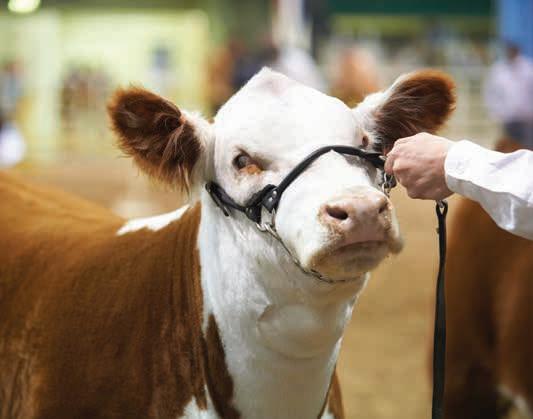
known as a go-to for Hereford genetics in California.
Secondly, the Colemans’ purebred Hereford bulls were turned in with their black commercial cows. The result gave the Colemans highly marketable baldie calves. Additionally, the Colemans leveraged the benefits of hybrid vigor by breeding their purebred Hereford virgin heifers to Angus calving ease bulls. The offspring from those matings produced animals that possessed the calving ease, vigor, and


carcass traits for replacement females or highly marketable steers. The purebred Hereford females are then bred to a purebred Hereford bull as two-year-olds for purebred calves the following calving season.
The Colemans also appreciate the Hereford breed for its docility, fertility, and feed efficiency in the pasture and in the feedlot. “Our
experience working with the breed association has most definitely been wonderful, and the breeders we have met throughout the country have been very welcoming. As first-generation Hereford breeders, we are very conscientious to keeping the values and traditions of the breed,” Tim shared.

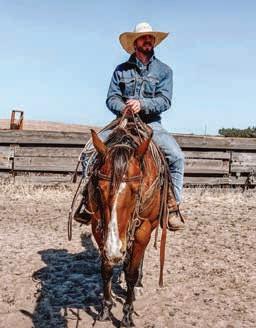
Sierra Ranches currently operates with approximately 225 production age purebred Hereford females, 150 purebred Angus females, and more than 500 commercial females. The commercial herd is predominantly red or black whitefaced cows with about 20 purebred Herefords in the mix.
Sierra Ranches owns several ranches in the region, running its cattle over thousands of acres. The central California location provides ample native forage in the ranch-
es on the hills during the winter and spring months. The herds are moved out of the hills to the valley in the summer. Typically, the Colemans’ herds graze grass yearround.
“We are fortunate to calve the majority of our purebreds up at our hill ranch in La Grange, California. This allows us to have pairs on native feed and off the irrigated ground. The calves are healthier. This process also gives us an idea on females that are more sustainable and will make bulls for our customers – the commercial cattleman,” Tim shared.
The purebred herds calve in the spring and the commercial herd calves in the fall. All calves undergo evaluation throughout multiple management stages. First, the calves are evaluated at weaning.
After weaning, the calves are vaccinated and backgrounded for 45 days. At this point the calves are evaluated again.
After the 45 days of backgrounding, calves flagged to go to the feedlot are sent to HRC Feed Yards in
Kansas. The bulls and heifers retained for development are moved to the hills in separate groups to grow throughout the winter and spring.
The heifers are removed from the ranches in the hills before the

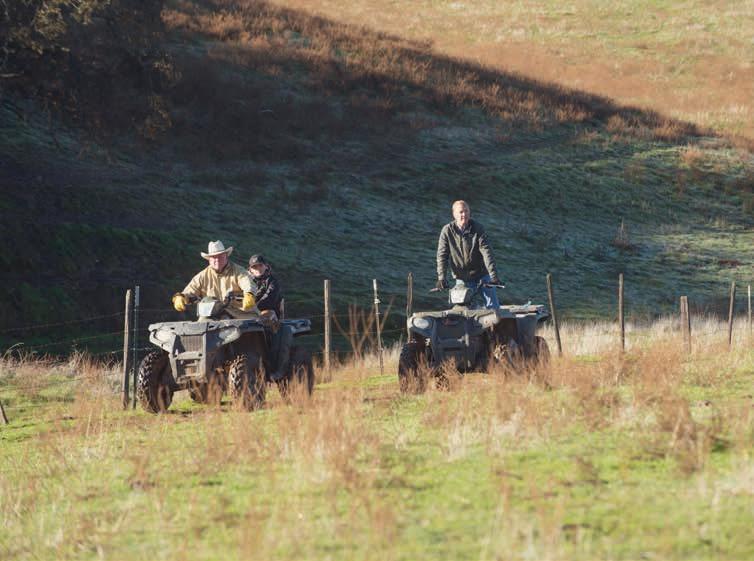
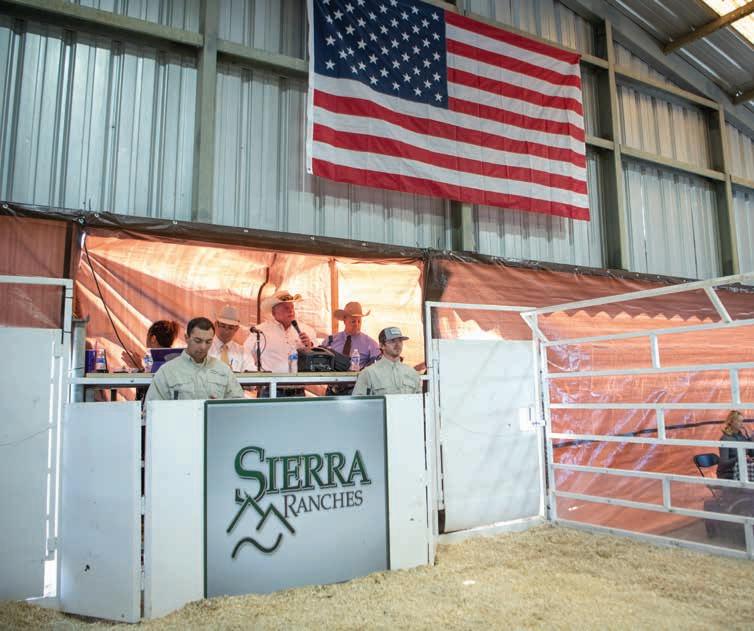
bulls. “We will bring the heifers down from the hills around March because we are prepping them for breeding and at that time we will do another sort. The top end we will AI, if there is any in question we keep them with the top end. And then the bottom end, we roll them to the falls (commercial herd),” Kara explained.
The bulls continue to develop on the foothill ranch that is comprised of steep terrain and annual native grasses. “In turning the young calves out in the hills their foot and bone gets built phenomenally. Their structure holds,” Kara said. “Instead of being on feed in a feedlot and not moving around, they
are taught to travel. So, we have really noticed a difference in our cattle the past couple of years from doing this. The set of bulls that we are selling are by far the soundest, good-footed animals I have seen in 10 years,” she added.
In 2019, Sierra Ranches implemented a new management strategy to track the parentage of its cattle. The Colemans incorporated the DNA process of using TSU samples to confirm parentage on all the purebred cattle on the ranch. They send in samples to verify the parentage of the sire and dam, ensuring they know 100 percent of an animal’s genetics.

Sierra Ranches sells its bulls at its own sale or at Vintage Angus Ranch’s sale. Bulls, females, and pairs are also marketed through private treaty or in consignment sales.
In recent years, the Colemans have been particularly excited about the market they have found for their black baldie calves born out of their first-calf heifer Hereford females. The decades of persistence and diversification is paying off. “We know what our females can produce on the commercial side and the purebred side. It is exciting. It is opening up many other options and avenues,” Kara stated.
Similar to most cattle operations across the country, weather conditions play an important factor in the success of the ranch. For Sierra Ranches, water is the number one determining factor regarding the sustainability of its cattle operations.
The Central Valley does not typically accumulate moisture from June to October. Therefore, Sierra Ranches relies on the early rains in October or November to germinate the native feed and grow grass in the hills. The winter snowfall runoff fills the reservoirs for summer irrigations for Sierra Ranches’ pastures.
“The other most challenging factors for running cattle in California
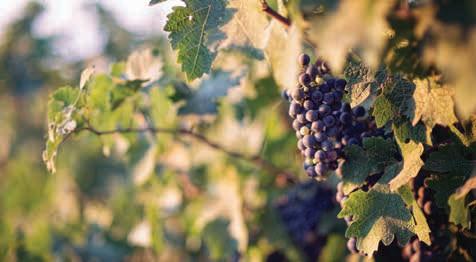
is location. It’s not a short drive from Kansas! The main advantage of being in California is weather. The beautiful, sunny days and mild winters without having to deal with snowstorms, does make ranching more enjoyable. As well as being near family,” Tim said.
Another benefit of the California climate is it offers the Colemans the ability to diversify in other agricultural practices. Tim focuses much of his time on developing walnut and almond orchards, along with many varietals of grape vineyards. Tim and his late brother developed several ranches together that were molded from the teachings of their late grandfather.

The Colemans are dedicated to making the future brighter for youth involved in agriculture. Sierra Ranches initiated the Hereford Youth Foundation of America (HYFA) Foundation 1 Campaign, a program in which breeders can donate 1 percent of their production sale proceeds to HYFA. Tim came up with the idea and Amy Cowan, HYFA Director of Youth Activities and Foundation, brought it to fruition. The program has grown through the years giving breeders, regardless of their operation’s size, new opportunities to make a difference in the lives of youth.
The future of Sierra Ranches stands strong and secure. The Colemans plan to grow their commercial operation and fine-tune their purebred operation along the way. The family’s commitment to the cattle industry runs generations deep as well as their dedication to cultivating crops and vineyards. Tim’s deep family roots in the Central Valley inspires him daily to prioritize being a good steward of the land in all the family’s agriculture endeavors.
learn more sierraranches.net
FALL OFFERING: Thursday, September 5, 2024 12:00 pm PST - La Grange, Calif.
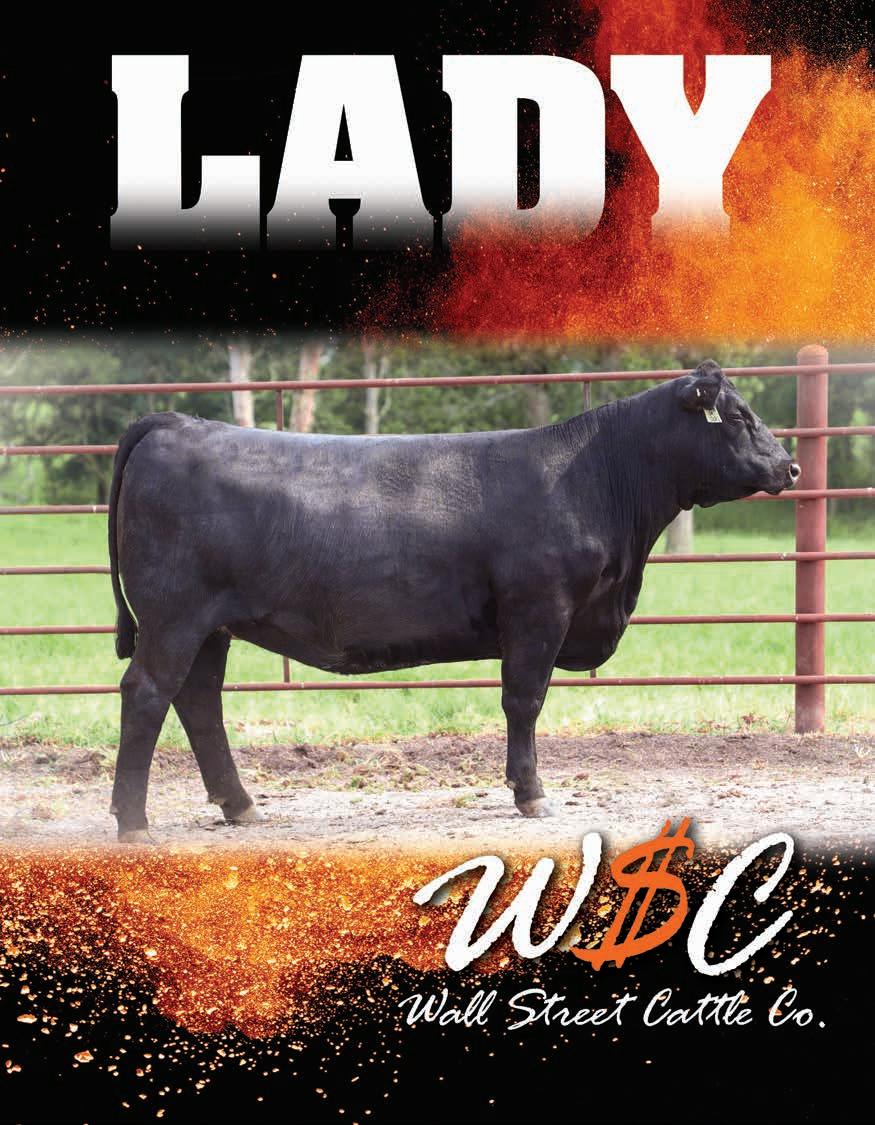

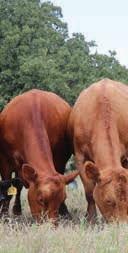
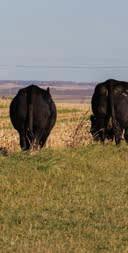
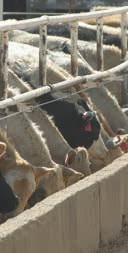


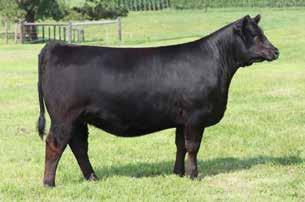

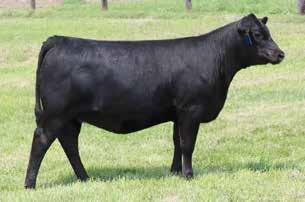




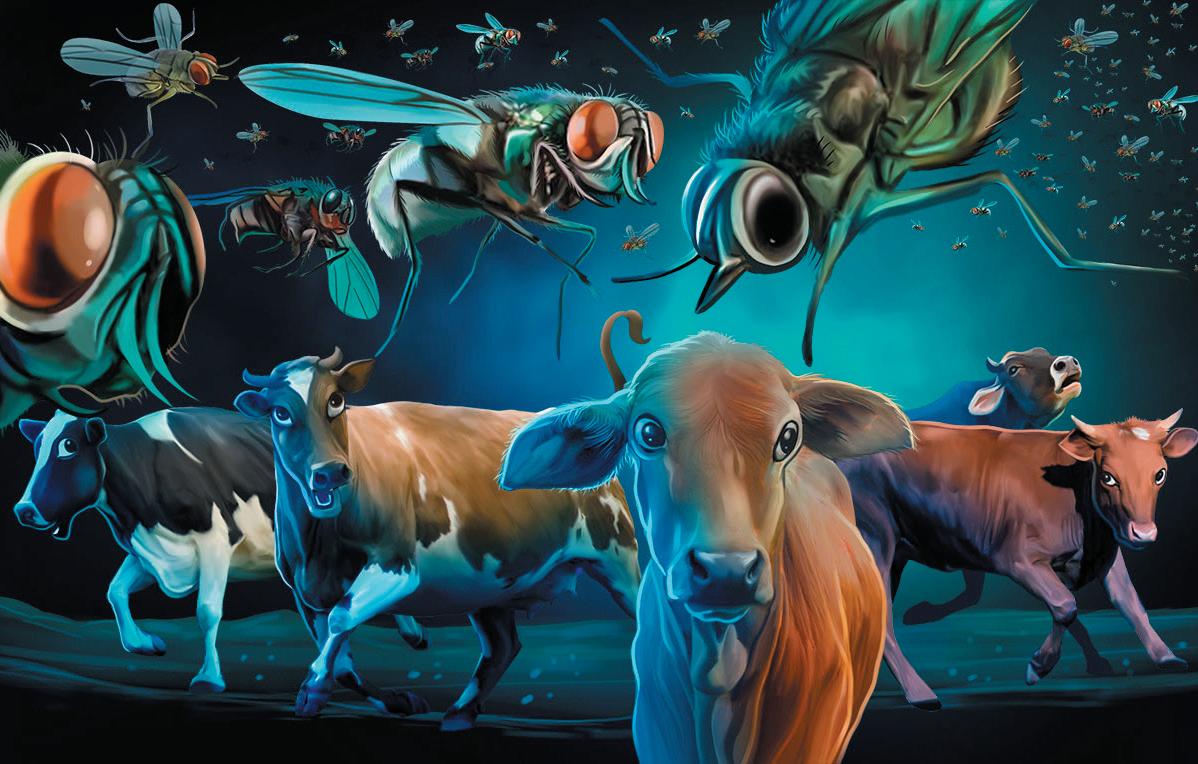
Don’t let resistant flies come back to haunt your cattle next spring.
Put a big dent in resistant fly populations with a fall application of BRUTE® .
Studies show that the best way to stop resistant flies from attacking your cattle next spring is to hit them with an application of BRUTE® Pour-on for Cattle this fall. BRUTE® controls horn flies, face flies and other biting flies, as well as Gulf Coast ticks and lice.
So make sure resistant flies don’t come back to haunt your herd next spring by treating your cattle with BRUTE® this fall.
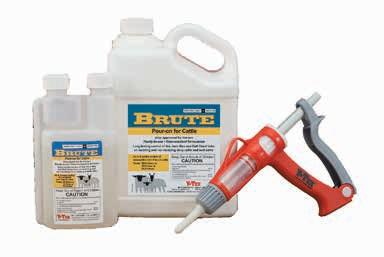
SATURDAY, SEPTEMBER 14, 2024
12:00 NOON AT THE FARM • 1485 N COUNTY RD 1900 E, CHARLESTON, ILLINOIS
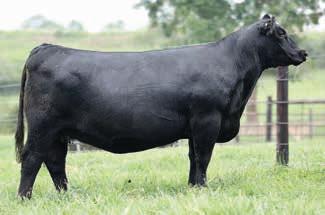

Selling the 2023/2024 ROV Reserve Champion Cow/Calf Of The Year, DIAMOND T SARAS DREAM 0206 Reg: AAA 19843493

Destiny’s Phyllis 275
A popular past champion and dam of our top selling bull in the 2022 crop! Sells safe to Prime!
Destinys Prime 325
A National Division Champion. His first service offered! Semen available at Cattle Visions.

SCC SCH Phyllis 815 Reg: AAA +19207134
Sells safe in calf to WCC Touchdown C110. This dam has produced several top sellers for us!

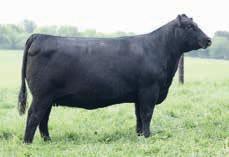

Andy & Amanda Wilson, Brooks Angus, Songbird and Blackburn Angus

Destiny’s Eileen 324 with her first calf by Musgrave Feat. Maybe the best pair we’ve ever raised! This calf has huge show ring and production potential.

SCH SCC Royal Blackbird 745
A past National Champion and Division Champion at the National Junior Angus Show. Has produced over $50,000 in progeny and embryo sales. Sells open ready to flush with embryos. Also selling her fabulous ET heifer calf by 24 Karat and bull calf by Conley No Limit.

Destinys Royal Blackbird 308 Out of 745. Dam of one of our top selling heifers last year. Sells safe in calf to Prime!
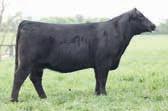
• FISHING DERBY FOR A $500 CREDIT IN THE SALE
• DESTINY BLACK ANGUS BEEF SERVED FOR LUNCH – COME EARLY TO VIEW CATTLE AND ENJOY A MEAL WITH US!
• 30 DAY FREE BOARDING AFTER THE SALE
Show heifers will have the option to be boarded until the North American. See Brian for details.



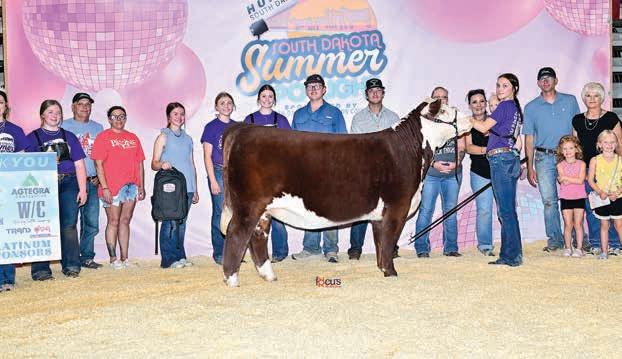

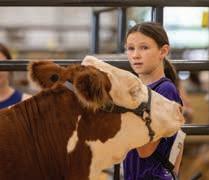
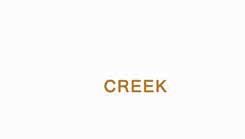



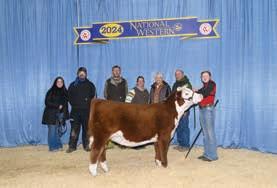


Brent Plugge, Nebraska Extension Educator
University research you can use.
Brian Vander Ley, DVM Epidemiologist, Great Plains Veterinary Education Center University of NE - Lincoln, UNL Beef
beef.unl.edu
Driving or riding through a pen or pasture of cattle is a favorite chore for many producers. Making sure our cattle have plenty of clean water, access to feed or forage and monitoring herd health are important aspects of daily care. When examining cattle, one important disease not to overlook is pinkeye.
Pinkeye is a highly contagious infectious disease that not only affects cattle in Nebraska but worldwide. The incidence and severity of this common disease can vary widely from year to year. Although pinkeye rarely causes the death of affected cattle, it can cause substantial losses to the cattle industry through decreased weight gain, lowered milk production and treatment costs.
Pinkeye is known to occur at all seasons of the year and in all breeds of cattle. Excessive weeping of the affected eye and closure due to pain are the two
signs most commonly observed. As the disease progresses, the cornea becomes cloudy or white. An ulcer frequently develops near the center of the cornea. Cattle with pinkeye keep the affected eye or eyes closed because of pain and to avoid bright sunlight. The course of the infection may run for several weeks.
Pinkeye is primarily caused by
Moraxella bovis (M. bovis); however, other organisms have been isolated from eyes with infections resembling pinkeye. It remains unclear whether these other organisms are primary pathogens or opportunistic, secondary invaders. Pinkeye is caused by a combination of factors. Other suspected risk factors that contribute to clinical pinkeye


are excessive ultraviolet light (sunlight), biological vectors (face flies, house flies, stable flies), plant material and dust.
Efforts to prevent pinkeye are directed at reducing transmission and minimizing irritation. Fly control can minimize both transmission and irritation; however, it is not a guarantee for prevention. Face flies can remain infected with M. bovis up to 3 days following feeding on infected material. Under experimental conditions, disease transmission is uncommon without the presence of face flies and is common with flies present. Fly control does have the added benefit of lim-
iting the fly avoidance behavior that reduces productivity in cows and calves on pasture. The infection can also be spread by direct contact when the eye secretions of an infected animal are rubbed into the eye of an uninfected animal.
Reducing dusty conditions and providing protection against sunlight also aids in control. Cattle often have grass or weed seeds in their eyes, and these materials can irritate the eye and contribute to the development of pinkeye.
Cattle with pinkeye can be helped by prompt treatment which usually includes an antibiotic and often in-
cludes eyepatches to limit further irritation. Since the cornea heals slowly, any ulceration is likely to require several weeks for complete recovery. Vaccinations for pinkeye have met with variable results.
There are other infections that look like pinkeye so it is recommended that you consult with your veterinarian to assist you in the diagnosis, treatment and control of pinkeye.
Interviews with the authors of BeefWatch newsletter articles become available throughout the month of publication and are accessible at: www.go.unl.edu/podcast.

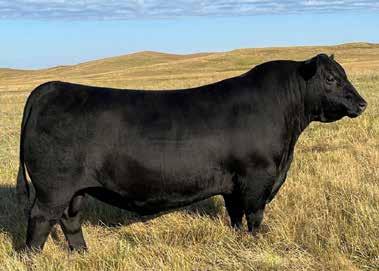

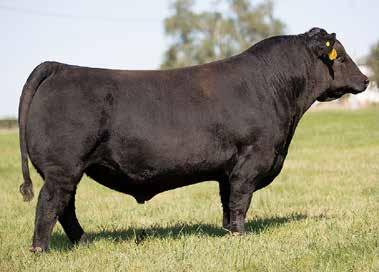
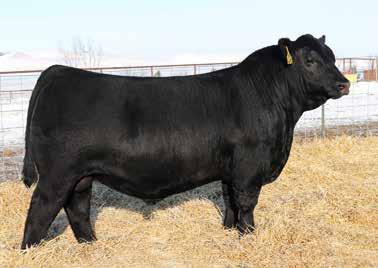

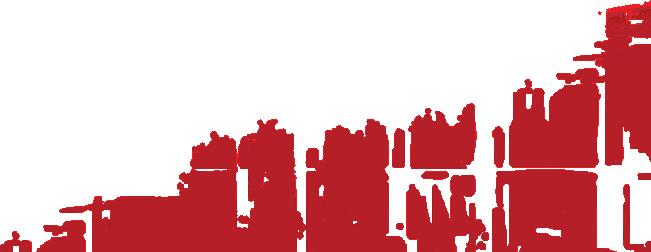
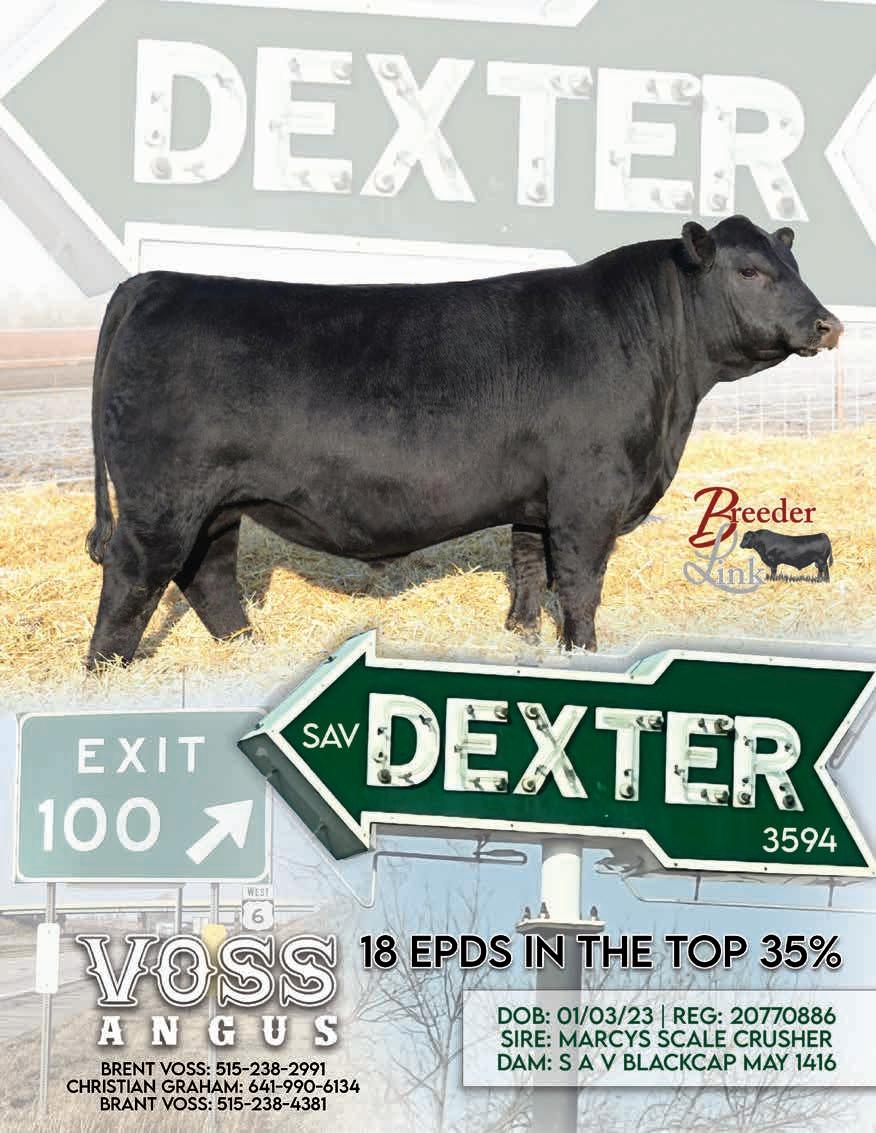
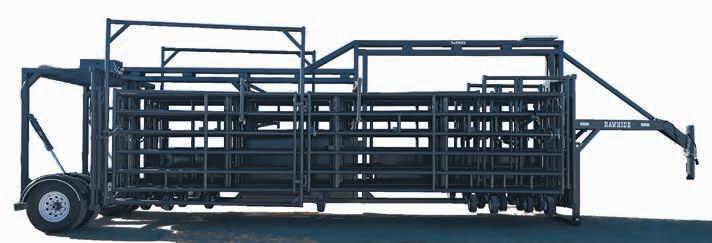
This Patent Pending design (pictured above) is the largest portable corral on wheels ever built. 22’ long panels, 6’ tall. 600-800 head capacity, all of which has a total weight under 15,000lbs. With multiple gates, spring latches, multiple pen capabilities for sorting.


Our most popular corral (pictured above with built in Loading Chute option), Hydraulic Adjustable Alley is now standard equipment. Head gate and size options available. Three sizes available; multiple pen options.
Othermodeloffered:
The Corral that started it all. Multiple pens, bumper or gooseneck models. Head gate option, 20’ long panels, 6’ tall. Sheeted temporary alley.
Bottom line: Strongest, largest and most portable corral ever built. Always made with animal and human safety in mind! Constantly making our product better and taking care of our customers is the goal.
#1 Warranty Available: As long as you own our corral, we will take care of you period. Call us to learn more.

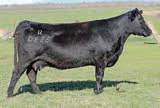



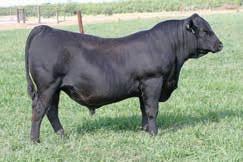
balanced numbers and maternal value. A breed changing herd bull prospect that really does it all!
Come Thursday night before the sale for a steak dinner and the Chad Bushnell concert!
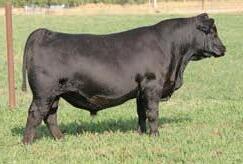
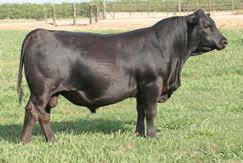
Boyd Justification


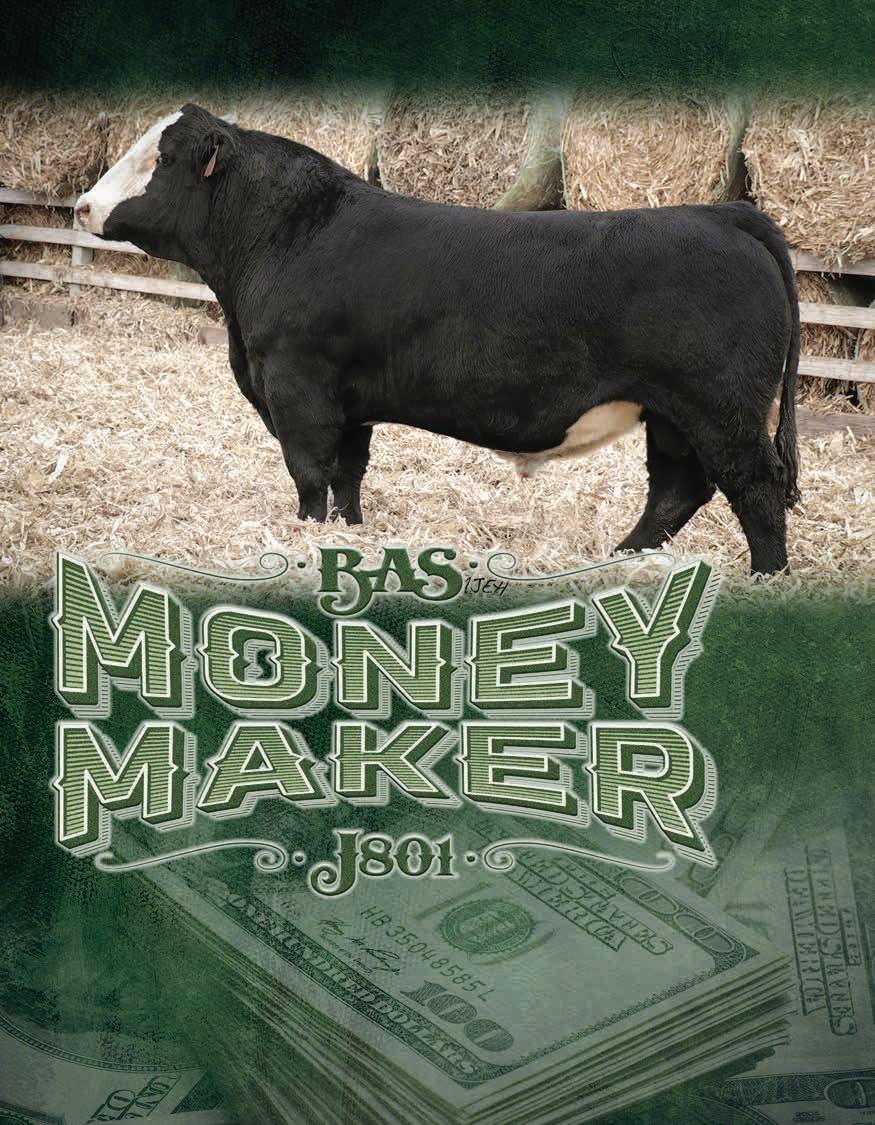


By Sarah Hill
Froelich Ranch, Selfridge, N.D., emphasizes genetic information to breed Quarter Horses and cattle that are high performing and easy to work with.
When you think of where to find excellent Quarter Horses, North Dakota doesn’t immediately come to mind. But the Froelich Ranch is indeed an outstanding source of Quarter Horses that are the cream of the crop.
The Froelich Ranch was settled in 1910 by Mathias and Katherine Froelich, who started with beef and dairy cows and small grains. Mathias’ son, John, took over in the 1940s, breeding Remounts for the U.S. calvary. John wanted to work
with horses that were quicker and smaller, so in 1948, he bought a palomino stallion, WR’s Comanche Boy, a grandson of Old Man by Old Sorrel.
“Our family has raised registered Quarter Horses ever since,” John’s grandson, JW, said. “My dad, Kelly, was the youngest of John and Barbara’s seven kids, and joined the operation in the late 1980s after graduating from North Dakota State University. John passed in 1993; Barbara in 2011.”

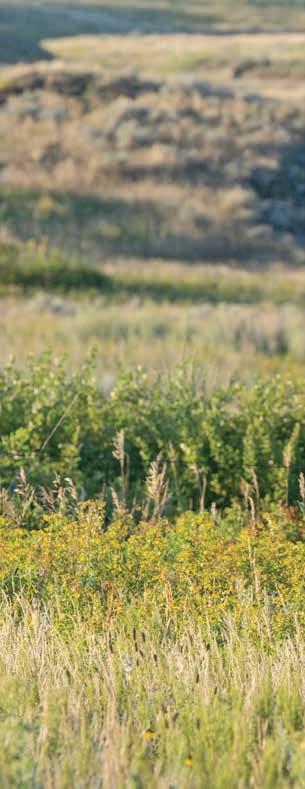
Over the years, John used sires such as Slash J. Bill, WR’s CM Jon, Blackburn 90, and Homer Tufcola to build a herd of Quarter Horses with disposition, color, and conformation. In 1983, the Froelichs bought McKeag, a blue roan colt who is in the pedigrees of many current broodmares on the ranch. The family purchased Rio Blue Badger in 2001. Golden Poco
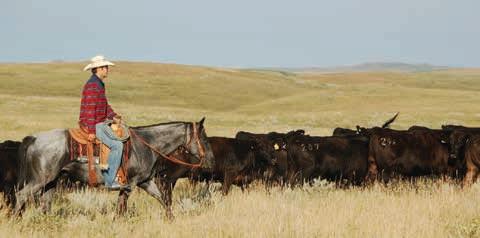
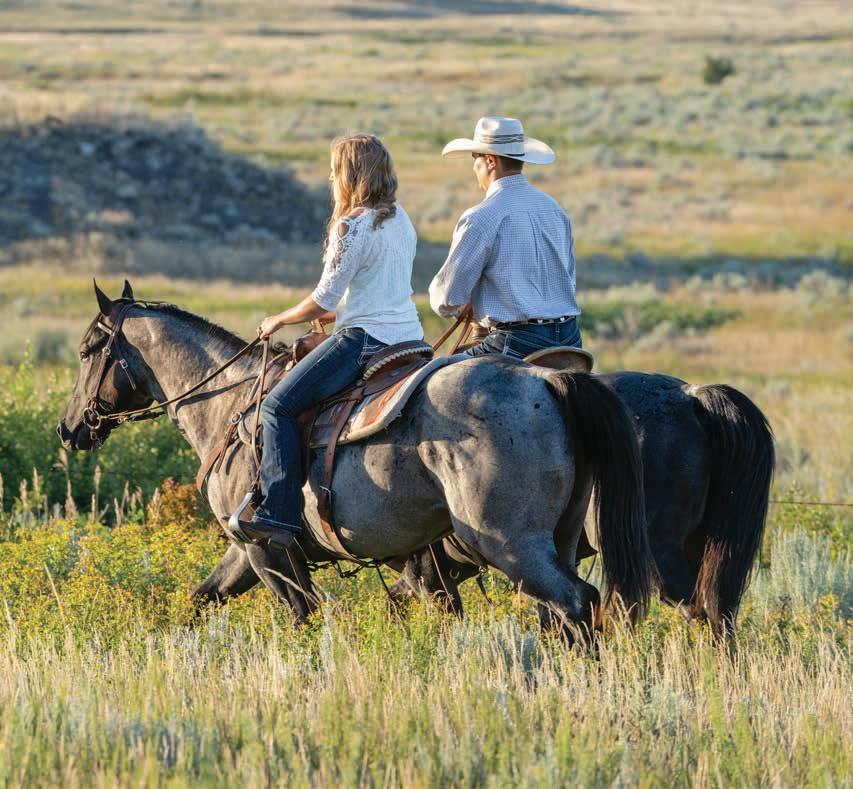

Storm, Reserve World Champion, Open Reining, 2007 IBHA World Show and Circuit Champion, 2007 Gateway to the World, Open Reining, still influences their broodmares.
JW and his wife, Alisha, along with JW’s dad, Kelly, and uncle, Terry, have emphasized genetic in formation in their decision-making with the Quarter Horse herd, in cluding six panel testing and coat color panels. The Froelichs take pride in horse disposition. It’s also important to the family to be able to jump on the horses in the spring and go, even after a long winter.
“We want to be able to cross the right mares with the right studs,” JW said. “We also have brought new horsemanship and training methods to how we work with our horses.”

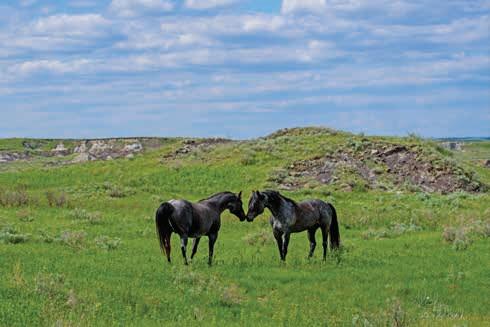
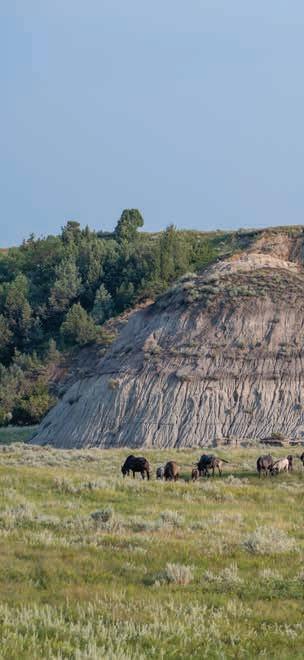
The herd currently includes 70 registered Quarter Horse mares, all pasture-bred with Froelich’s own studs. Three of their main studs are FQHR McLovin, sire of a sixtime world champion roping horse; FQHR Conagher; and LHR Smart Sugar Boon. The ranch has the first set of colts out of Boon this year, who was purchased in 2022. Boon was purchased to introduce modern ranch performance bloodlines into their foundation-bred Quarter Horse herd. Trained by a NRHA trainer, Boon quickly showed a passion for cutting. Boon has proven his ability to stand alongside their other ranch stallions. Mares begin foaling at the end of April or beginning of May.
“McLovin’s name is really growing, and his offspring are highly sought after because of their trainability and retainability,” JW said. “We start them and when we go back to work with them, they remember everything and are very friendly. You can walk up to them in the pasture. They’re really
good-minded horses, but also have performance in them.”
The horses are primarily fed alfalfa/grass hay and graze pasture year-round. They also receive five pounds of cracked corn per day during the winter, foaling season, and after breeding.
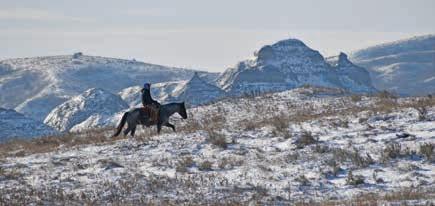


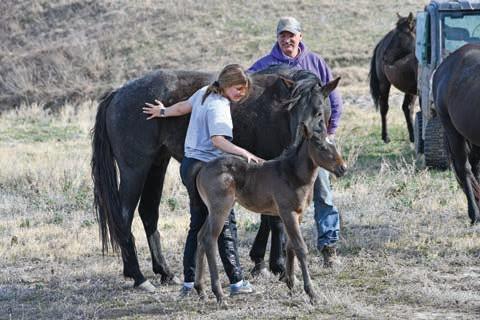
The Froelichs are holding their 54th annual sale in September, and over the years, have used various advertising outlets such as AQHA Journal, The Stockman, local radio ads, and social media to market both horses and cattle. However, word of mouth continues to be a successful advertising tactic.
“We have customers who have been coming to our sale my entire life,” JW said. “We’ve also sold horses from California to Florida and everywhere in between, and countries including Canada, Hungary, and Mexico. We’ve even had bidders from Australia, Germany, and New Zealand.”
Froelich Ranch has received many awards for their outstanding horses. In 2009, they received the AQHA Legacy Award for 50 consecutive years of adding to the heritage of the American Quarter Horse. AQHA recognized Froelich Ranch as the first Ranching Heritage Breeder in North Dakota in 2010. John Froelich was inducted to the North Dakota American Quarter Horse Association Hall of Fame in 2023. Just this year, Froelich Ranch was inducted into the North Dakota Cowboy Hall of Fame.


Froelich Ranch is home to 550 momma cows. The Froelichs utilize artificial insemination to improve genetics and make Simmental/Angus (SimAngus) replacement heifers with good dispositions. The Froelichs keep and develop all heifers and AI them, selling 220 bred heifers annually. Bull calves out of the top females are retained.
“Disposition is really important to us, because when I’m out tagging calves during calving, I don’t want to have to worry about the cows coming after me,” JW shared. “I make videos for TikTok using a GoPro camera, and in those videos, the cow just stands there and looks at me. We want cattle that are easy to deal with, not high-headed.”
The Froelichs look for qualities in their 20 to 25 cleanup bulls that will transmit on to their replacement heifers, such as EPDs for milk, stayability, docility, and rais-
ing big steer calves. JW noted that in October, when they wean calves born in March or April, calves weigh about 650 to 700 pounds.
“We like using Simmental genetics because they add more pounds and frame size, but we like the Angus look for pretty heads and deep bodies,” JW explained. “We’ve done a good job of balancing between the two breeds, so the cattle aren’t too big or small.”
Heifers are bred around June 1, with other females being bred at the end of June. In the past few years, the Froelichs have been using a lot of SAV Resource, Koupal Advance 28, and CCR Cowboy Cut. Lassle Ranch Simmentals in Montana provides many of their Simmental bulls.
“We buy a lot of heifer bulls from Ellingson Angus, Lindsov-Theil, and the Koupals,” JW said. “We use straight Angus bulls for cleanup bulls for our heifers because of their calving ease. We use Simmental bulls on cows.”
The family has also focused on improving animal nutrition by feeding a balanced ration. They work with nutritionist Dustin Puhrmann from Cooperative Farmers Elevator in Iowa.
JW and his wife, Alisha, studied animal science at the University of Minnesota-Crookston; JW purchased his first 25 head of cattle in 2016 when he returned home from college. Since then, he’s worked to grow his herd with all cattle running together, regardless of owner.
The operation raises 1,500 acres each of corn and hay, with most of the alfalfa/grass hay being fed to the horses. The cattle’s TMR includes corn silage, hay barley, oat hay, millet hay, cracked corn, modified distillers, and liquid feed with Rumensin, vitamins, and minerals.
JW’s uncle, Rod, and his two sons, Chase and Lance, have their own ranch where they raise cattle and horses, but the families work together to work cattle and share farming equipment.
In 2020, Froelich Ranch built a feedlot to house just shy of 1,000 head, where they feed replacement heifers, background their own steers, and custom feed.
“The feedlot gives us the option to keep calves or sell them right off the cow,” JW said. “It gives us more flexibility. Last year, we also developed some of our neighbor’s heifer calves and inseminated them.”
Large pens of steers are usually sold through private treaty, with the help of Ellingson Angus, Bryce Lindskov, Brent Theil, and Scott Ulmer. Depending on the year and cattle prices, the family has also sold calves through the local sale barn. Bred heifers and bull calves are privately marketed based on returning customers and word of mouth.
“We like to support the local sale barns, so we’ll take cull cows and other cattle to sell there,” JW shared.
As time goes on, the ranch will continue transitioning to JW and Alisha, as Kelly and his wife, Renee, phase out. JW and Alisha have a one-year-old son, Colt, who already loves seeing the horses. JW would love for him to be the fifth generation to operate the ranch. JW’s sister, Brooke, is also an important part of the operation, helping with the horse sale catalog remotely.
learn more froelichranch.com


54TH ANNUAL PRODUCTION SALE: Saturday, September 21, 2024 1:00 pm CST - At the ranch


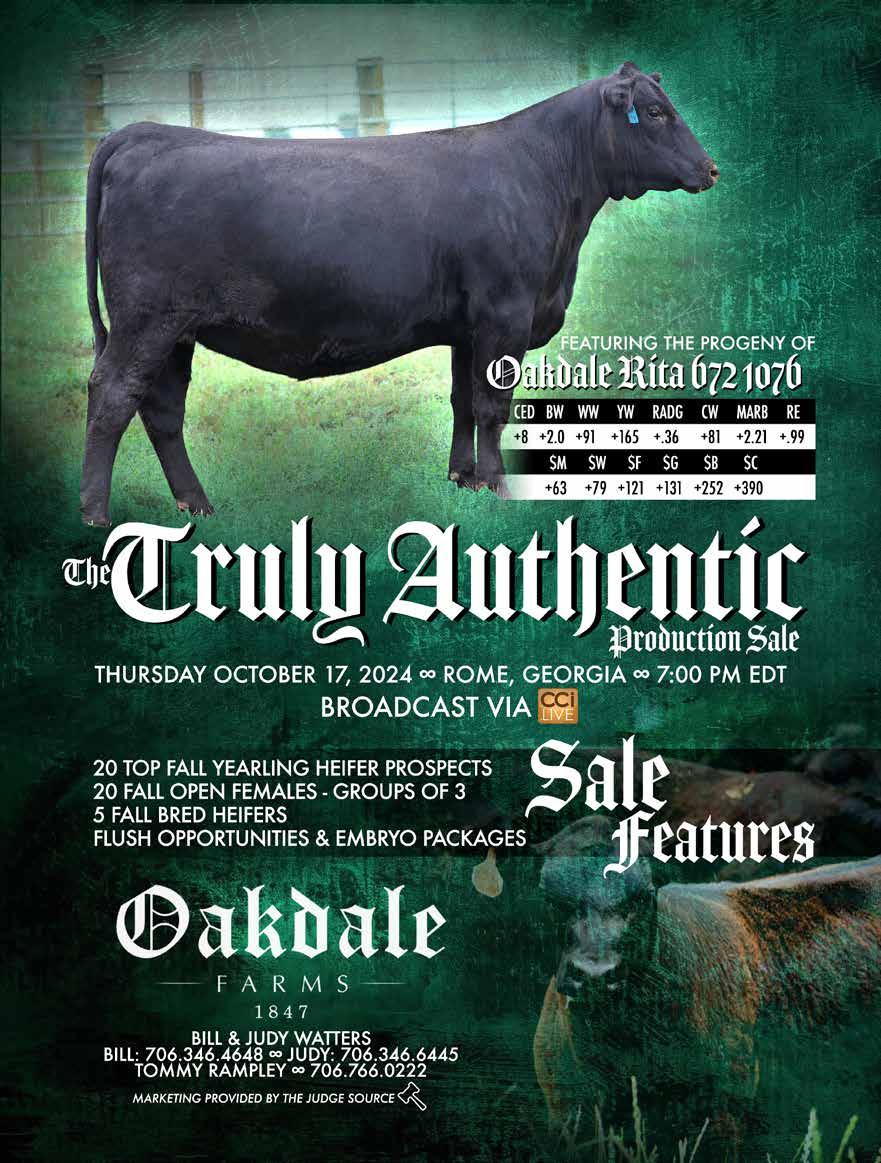

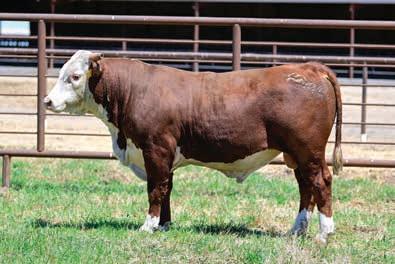
These bulls were turned out at our foothill ranch with native feed from December to May. These bulls will be featured in the Vintage Angus Carcass Maker Bull Sale.
20 Bulls will be offered in the Vintage Angus Carcass Maker Sale
SEPTEMBER 5, 2024 | NOON at our foothill location in La Grange, CA
These bulls are sired by the same sires of these winning carcass steers @ HRC:
Overall Champion Steer
Champion Individual Commercial Steer
Reserve Champion Individual Commercial Steer
Highest Marbling Score Commercial Division
Highest Average Daily Gain Commercial Division
Featuring sons of: Churchill Red Baron 8300F ET (Reg. #P43938746)
NJW Long Haul 36E ET (Reg. #P43829326)
TKC Fortitude 9029 ET (Reg. #44074876)
TKC 6602 Belleman 9019 ET (Reg. #44171629)

Tim & Kara Coleman, Owners • Tyler & Kathryn Coleman
Tim 209-968-7232 • tim@sierraranches.net
Kara 209-613-6062 • kara@sierraranches.net
Tyler 209-613-5872
P.O. Box 577980, Modesto, CA 95357 www.sierraranches.net • Find us on



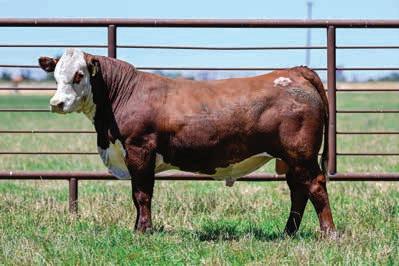



Functional forage and pasture.
contributed article by Justin Fruechte, Product Expert - Ag Renovo Seed, Brookings, S.D. renovoseed.com
n the Midwest we find ourselves with an excess of grass until mid-July, less abundance of grass in July and August, and a good supply of crop residue in late October through December. September is the month when cows start reaching over loose barbed wires for tall grass in the ditch as regrowth of grass in cool season pastures is washy and short. Couple this with
fast growing calves on cows getting sucked down and this makes for a restless herd. Not only is performance on pause in this scenario, but pastures are typically over-grazed from this, ultimately setting them back for next spring.
Filling this grazing void needs to come from an annual forage system. Finding the planting window in conjunction with a crop rotation
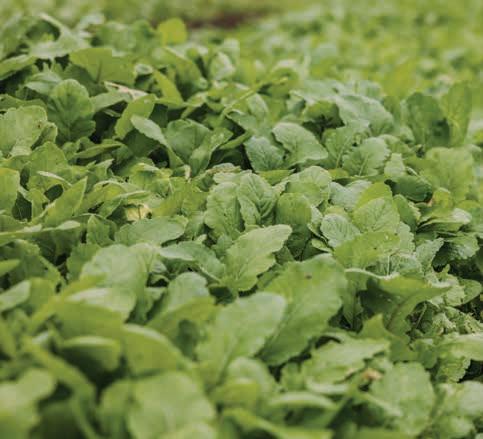
takes a bit of planning. Ideally, to graze a forage in September or October, you should plant it in July or August. So, what system can we develop that will yield the most return per acre, and kick out some bonus grazing acres before we wean and move to grazing crop residue?
At Renovo, when we develop a grazing forage mix, we want diversity. Symbiotic relations are formed amongst multiple species, and growth and yield are always better. Sort of like heterosis of crossing a Simmental bull on an Angus cow. Combining brassicas with grasses will give you that SimAngus outcome. Along with more forage yield, this diversity of species fits better with any crop rotation.
The reason this combination kicks out a high performing blend is because the grasses are your high yielding component that provide dry matter and roughage in the diet. The brassicas compliment them by being higher quality and more digestible. They also work with the
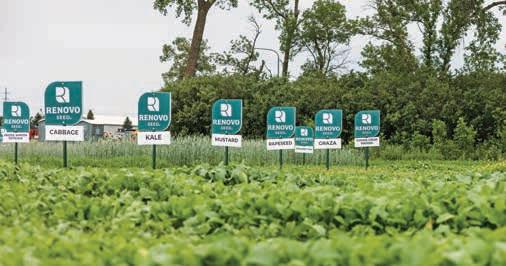
weather of the season. If you use warm-season grasses, they will explode in growth through August, but die with the first frost. The brassicas are frost tolerant and will stay green even with snow cover. This makes for a TMR that averages out to
3 to 4 tons/acre of DM at 13 to 15 percent CP.
The sub-species of brassicas that work best for grazing are turnips, rapeseed, and radishes. If you want the newest and best on the market, take a look at Winfred, Hunter or

Pasja, Barkant turnip, and Graza radish. These improved varieties will have more foliage and yield.
Correctly incorporating an annual grazing mix into a crop rotation can work by planting it as the lone crop for the season, or double cropping. If you’re double cropping, fit this into the field after a small grain harvest, but make sure to have it planted by the end of the summer. We’ve seen many success stories with allocating acres strictly for forage production. In this case, I’d use crops that regrow for multiple harvests during the season. This can gain you a hay or baleage cutting, then the regrowth provides the grazing for your summer slump timeframe.
The nutritional boost that this plan can have for your cows is fantastic. If you have pairs that are ready to wean the first of November, this provides the perfect boost to performance before that time. Continue the growth curve on your calves and put your cows on stalks in good condition by grazing a high-quality forage mix in September and October.
Photos courtesy Renovo Seed learn more renovoseed.com
Renovo Seed, Brookings, S.D.
The team of folks at Renovo Seed have roots that run deep in farming, agriculture, and in the overall respect for the landscape. They opened their doors in 1987 and continue to walk alongside farmers, ranchers, and landowners across thousands of acres throughout the Midwest.

Jon & Maradith Janssen 515-468-8221 janssenangus1477@gmail.com 36251 Hull Ct, Earlham, IA 50072

JANSSEN DONNA OF PH
Foundation Janssen Donna donor by SAV Renovation 6822 from a daughter of Coleman Donna 714.

JANSSEN BLACKCAP MAY 7079
This triple-bred Blackcap May Janssen donor produced the top-performer Janssen Record Rainfall 1011.

COLEMAN DONNA 057
Incredible full sister to Coleman Glacier 041, sired by SAV Renown 3439 from Coleman Donna 439.

JANSSEN EMBLYNETTE 7042
This productive Pathfinder and donor produced multiple herd sires including Janssen Chuckwagon 1006.

MB ELITE BLACKBIRD 7035
Impressive Janssen foundation donor by SAV Recharge 3436 from the same family as Tehama Patriarch F028.
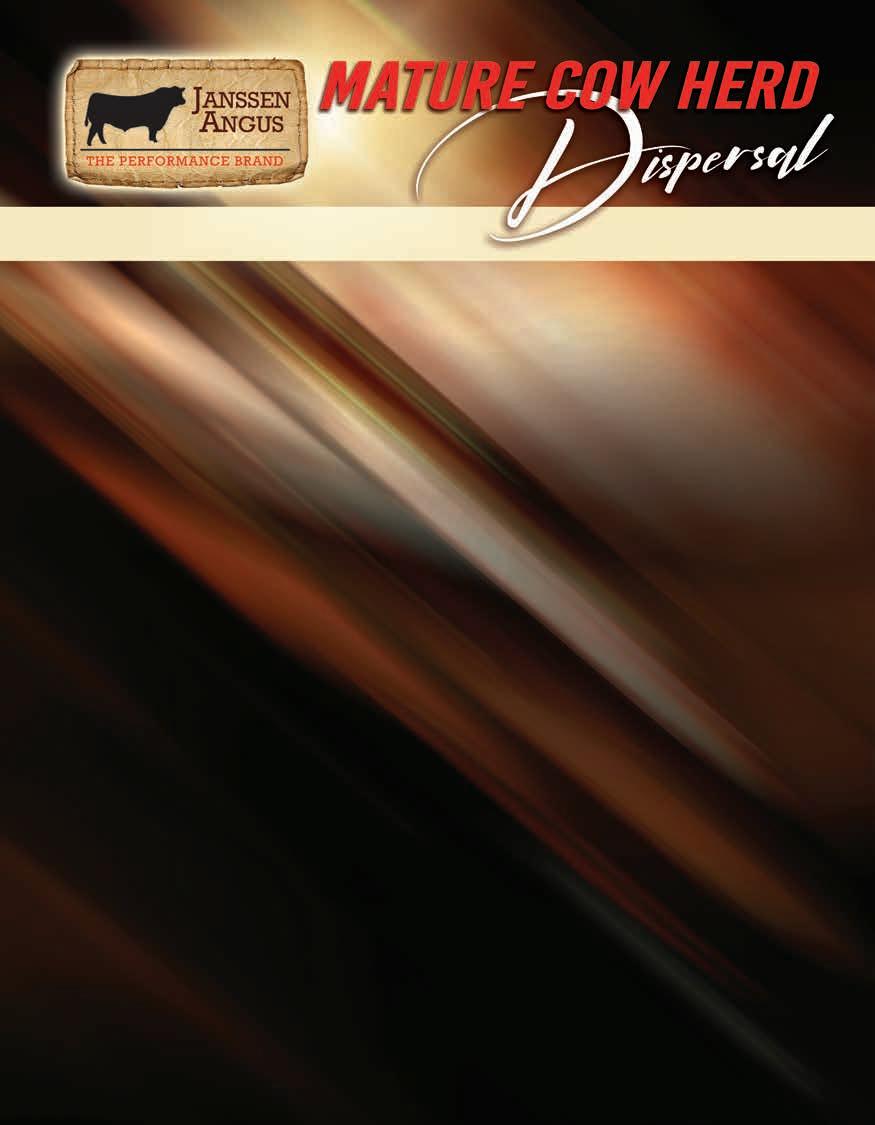
Janssen angus sale headQuarters 1070 Pitzer Road, Earlham, Iowa

JANSSEN EMBLYNETTE 7953
Powerful second generation Janssen Emblynette donor sired by SAV Cutting Edge 4857.

JANSSEN EMBLYNETTE 7045
The proven dam of Janssen Stock Option 1015, the top-selling bull of the 2022 Janssen Sale who sold for export to Canada.
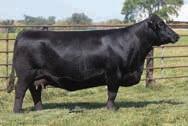
Janssen Madame Pride 7059
One of the true herd Treasures sired by SAV Sensation from the same dam as the $64,000 total valuation Janssen Madame Pride 8028”
UNPRECEDENTED OPPORTUNITY!

JANSSEN MADAME PRIDE 9044
Productive daughter of SAV Rainfall 6846 from the second-top cow of the 2022 Janssen Female Sale.
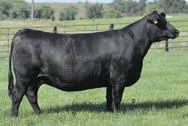
JANSSEN EMBLYNETTE 7123
Exquisite daughter of SAV Pedigree 4834 stemming from seven consecutive generations of Emblynette Pathfinder Dams.
For nearly a solid decade, leading commercial and registered cattlemen from across North America have selected outstanding Angus bulls in the successful annual Janssen production sales at Earlham, Iowa. Now, for the first time ever, the Janssens are offering every registered bred cow born in 2020 and before, along with the natural heifer calves from those cows and select ET heifer calves. Included are the dams of prominent herd sires and AI sires along with several Pathfinder Dams. Featuring the progeny and service of the Janssen Genex sire Coleman Below Zero 2106 and other popular sires!





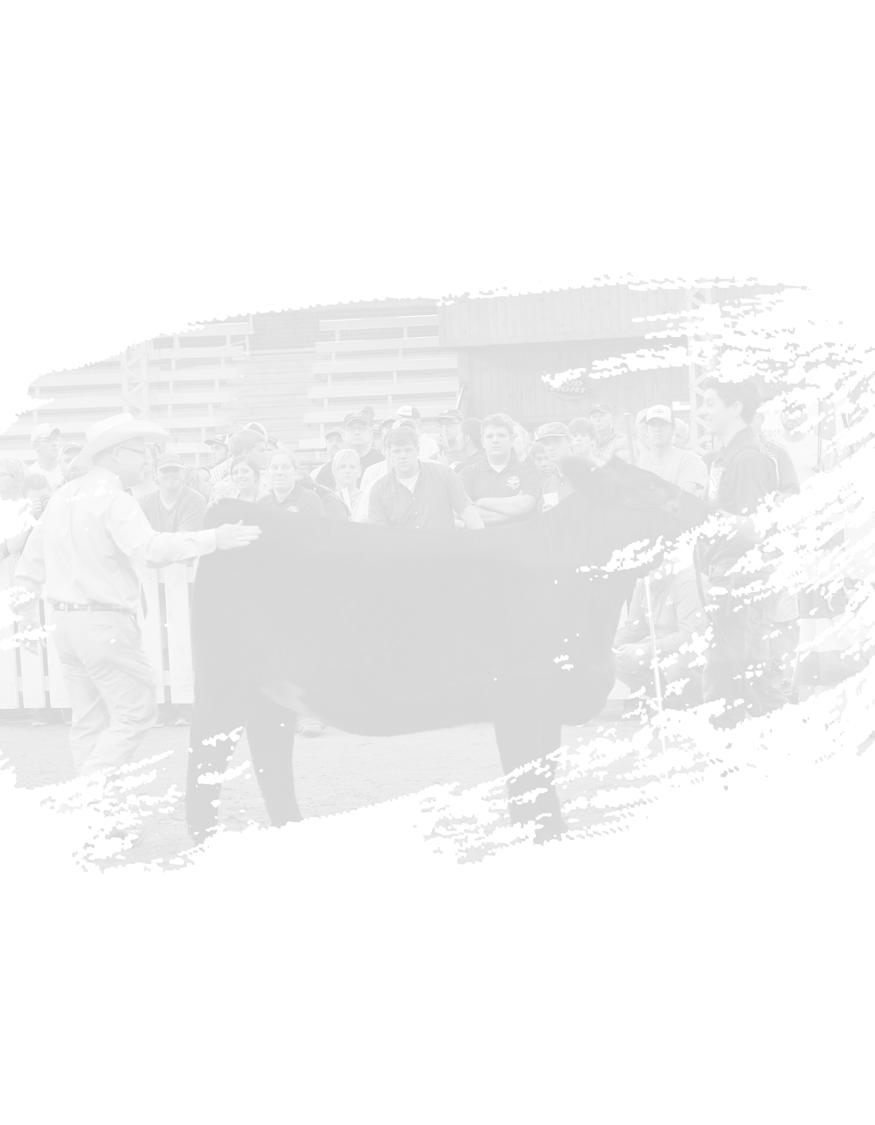
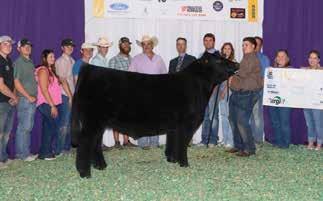

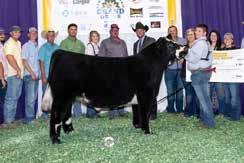



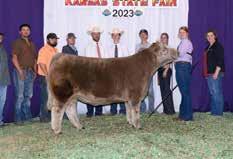
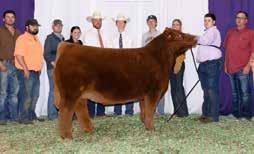





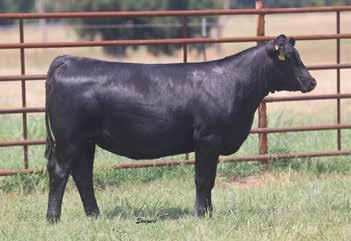





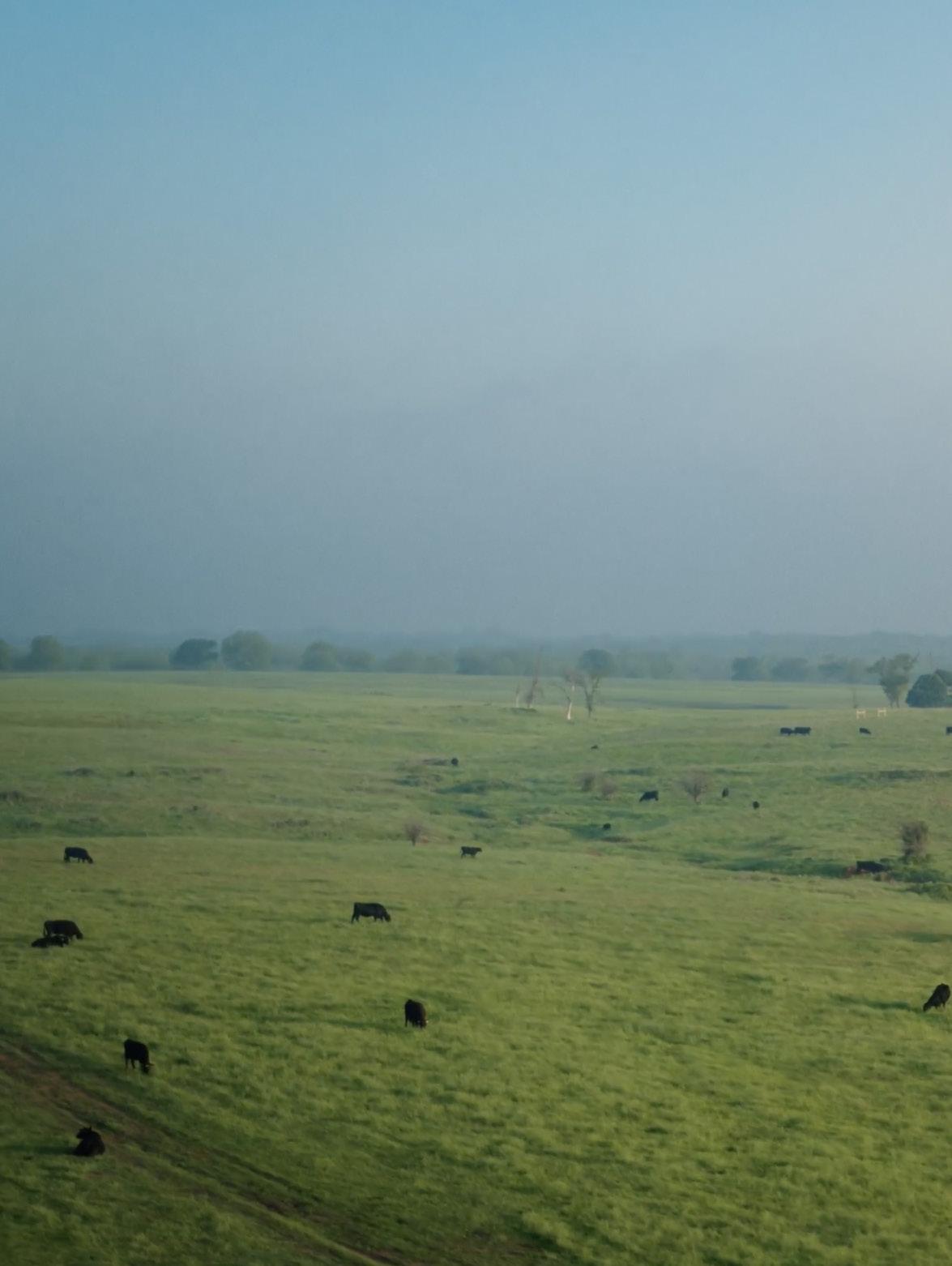

By Cheryl Kepes

Meats by Linz expands operations with the opening of a new $52 million facility in Indiana.
A
Meats by Linz, a leader for decades in the meat purveyor industry, propels its operation to the next level with the opening of a new company headquarters and production facility in Hammond, Indiana. The state-of-the-art facility equips Meats by Linz with additional space and equipment to better serve its consistently growing customer base.
“Our growth and success since my grandfather opened a neighborhood butcher shop 60 years ago stems directly from the dedication and unwavering spirit of every member of our team,” Frederick Linz, owner and CEO of Meats by Linz and Linz Heritage Angus, said during the plant’s grand opening ceremony.

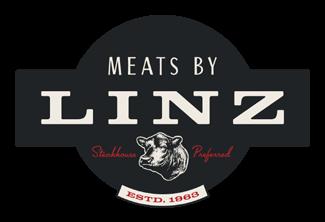

The new 120,000-square-foot facility includes production space for wet and dry aging of Meats by Linz’s raw materials and custom portion control for national and international distribution. The building houses 110,000 square feet of operational space and a 6,000-square-foot dry-aging room. The plant also features a luxury office area, backup generators, and a top-of-the-line test kitchen.
“Anybody can just trade beef and bring in boxed beef and sell it, that’s not what we want to do. We don’t want to be everybody else. We want to be somebody special.”
- Frederick Linz, owner and CEO of Meats by Linz

The building improves Meats by Linz’s efficiency by equipping the company with the ability to produce more product in less time, as well as taking care of the employees with modern facilities.
The new Meats by Linz facility brings with it more than 300 jobs. “Having an internationally known company like Meats by Linz relocate its global headquarters to Hammond is a huge economic development victory for our city,” Thomas M. McDermott Jr., Hammond’s Mayor, stated in a news release.
Four-generations of the Linz family have worked to grow the esteemed meat purveyor company. The Linz family business started in 1963 as a neighborhood butcher shop on the southside of Chicago. Today, Meats by Linz services some of the world’s finest steakhouses, hotels, country clubs, casinos, cruise lines, and more.
The company sets itself apart by raising much of its own supply. In 2012, Meats by Linz established Linz Heritage Angus (LHA). The Angus ranch utilizes proven Angus genetics to produce the exceptional level of beef Linz’s customers expect.
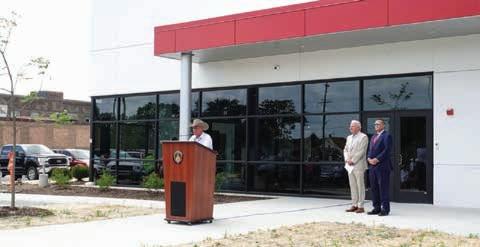
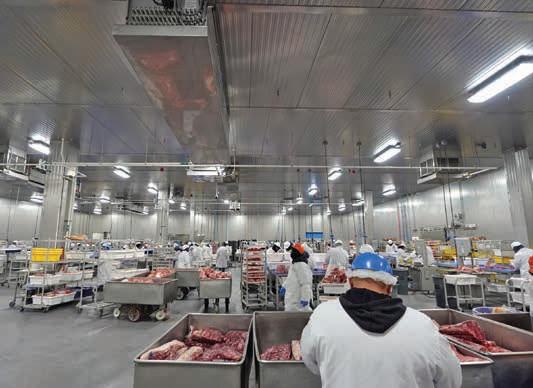


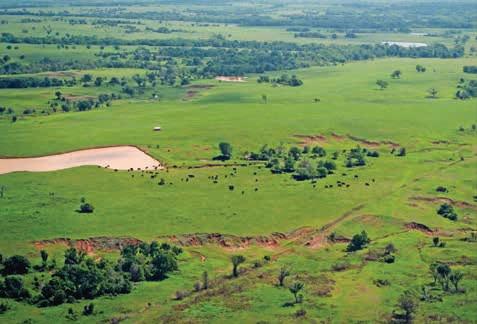
“We have tried to separate ourselves from the norm. In order to do that we have had to go out and get into the live side and do things differently from everyone else,” Linz said. “Anybody can just trade beef and bring in boxed beef and sell it, that’s not what we want to do. We don’t want to be everybody else. We want to be somebody special,” he added.
The company operates a conception-to-plate business model. Linz Heritage Angus runs part of its cattle operation on over 5,000 acres

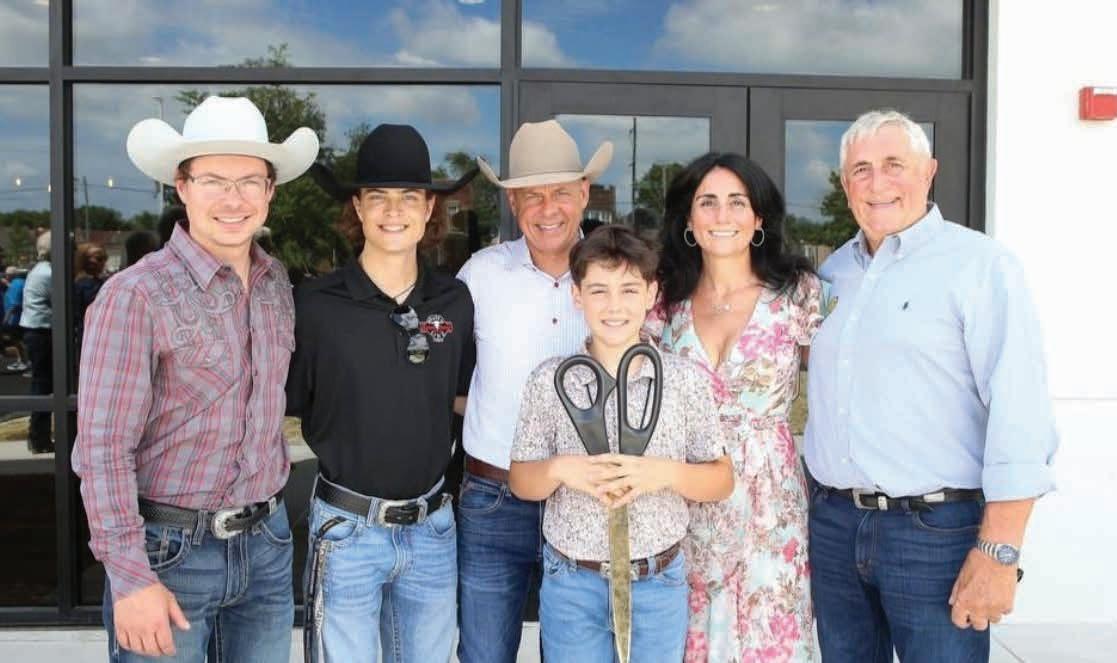
at Linz Heritage Angus at Blue Branch Ranch in Byars, Okla. Linz Heritage Angus utilizes AI and embryo transfer to build its seedstock operation. Linz Heritage Angus operates commercial herds as well. The overall goal is to produce high-grading, efficient cattle.
Linz relies on its calf buyback program, implemented several years ago for its cattle customers, to ensure it has enough product to process for its clients. Additionally, the company owns a feedlot in Rocky Ford, Colorado with a 10,000 head capacity.
Meats by Linz operates distribution centers in Dallas, Texas;
Orlando, Florida; Phoenix, Arizona; Atlanta, Georgia; and Puerto Vallarta, Cabo, and Mexico City, Mexico. The entirety of its holdings gives Meats by Linz control over the quality of its raw materials throughout every step of the process. The company achieves quality and consistency in its products through its thorough processes from procuring the highest quality Angus genetics to perfecting its old-world meat aging techniques.
The new facility in Hammond ushers in yet another milestone in the Linz family tradition of growth in the meat purveyor industry. “We are looking to keep this thing going for a long time. We are ready to go to the next level,” Linz stated. learn more meatsbylinz.com thelinzshop.com linzheritageangus.com

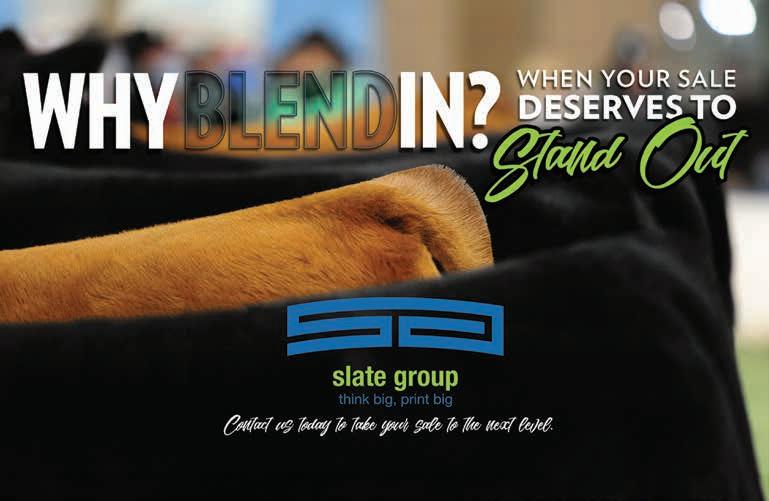




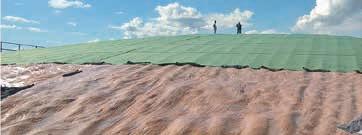

SATURDAY, OCTOBER 12, 2024
Star G Ranch Auction Barn, Douds, Iowa

Offering over 200 Registered and Commercial Red Angus Females

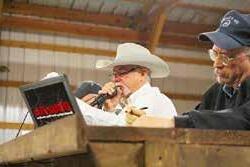
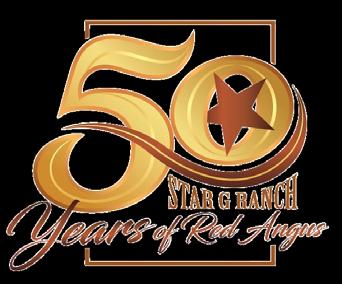




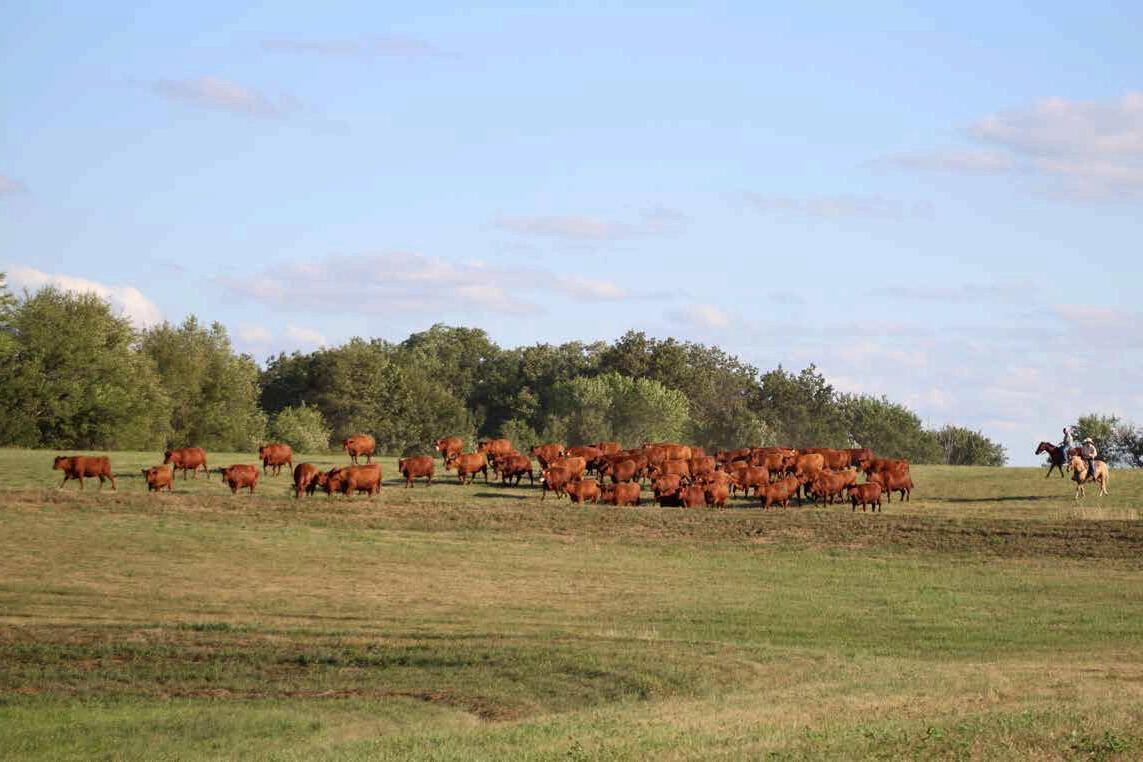


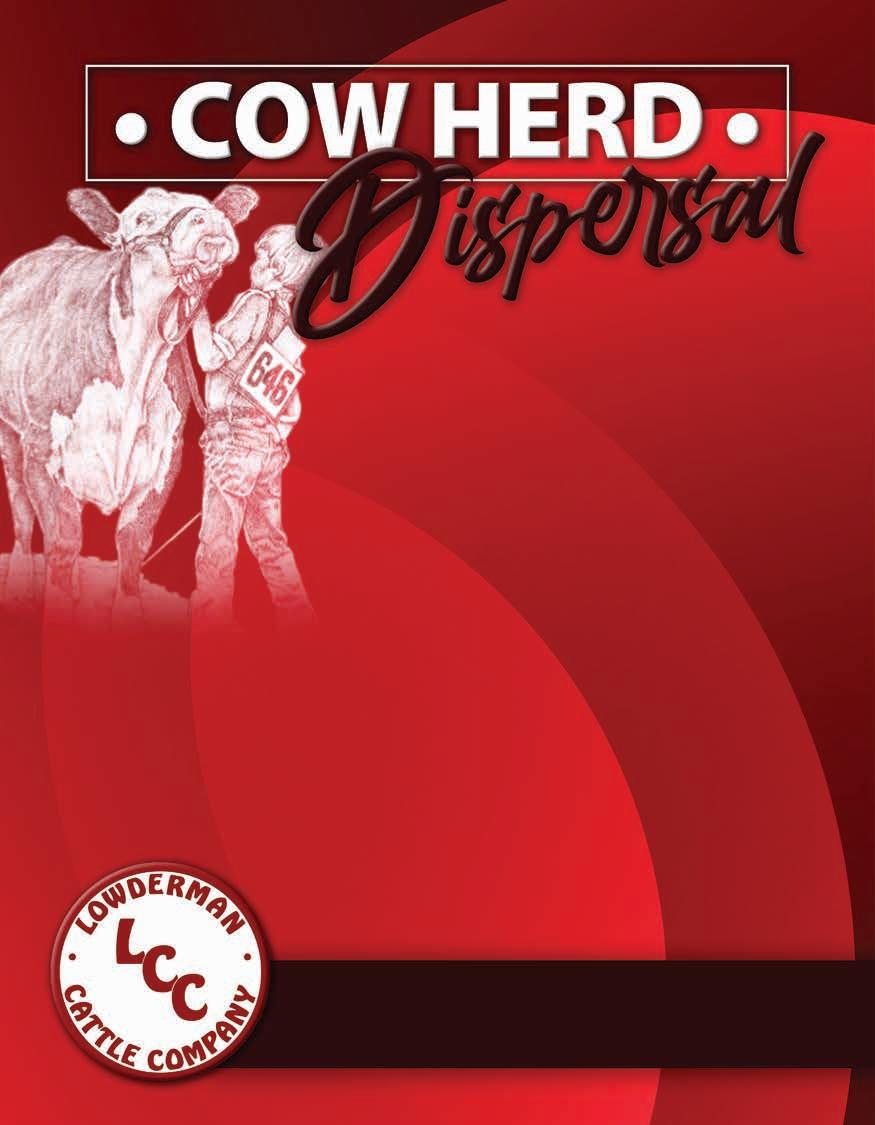
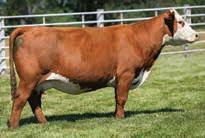
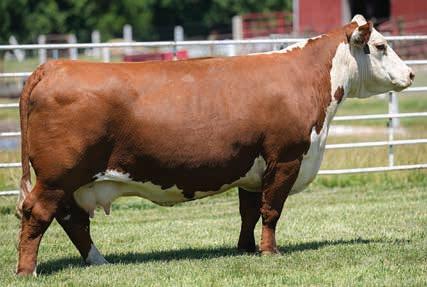
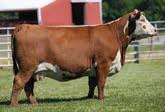
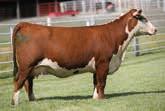
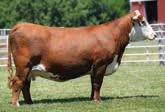
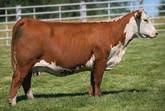
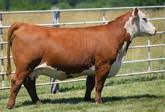
Sunday, September 15, 2024
2:00 PM CST | Shelbyville, IL
Selling Simmental & SimAngusTM Fancy Open Heifers, Bred Females, Donors and Steers



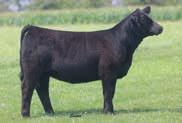


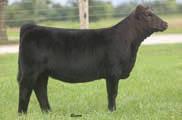


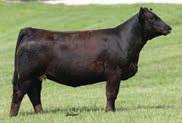
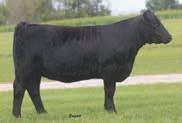
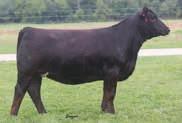
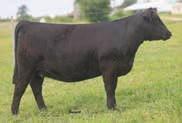



SALE STAFF
SALE CONSULTANTS



Hillstown Farms
GUEST CONSIGNORS Black Diamond Genetics 217-433-0242
618-978-0531
JR Simmentals
217-248-8447
Fox Creek Cattle
618-843-3276, Travis 618-553-8865, Brock
Jeff and Justin Lewis
217-251-2400, Jeff 217-251-5020, Justin
Russell Land and Cattle
618-262-6509
Hanson Land and Cattle
815-382-6684
Travis Farms 618-843-5264
Huenefeld Simmental Farms 402-764-0981, Matt 815-238-6641, Steve Emily Ivey
865-254-2998
Duane Stephens Auctioneer 812-887-1523
Dan Naughton 217-304-6502
Austin Rincker 217-825-5248
Zach Rincker 217-690-6845
Rob Neikirk
618-839-3143
Roger Allen 715-684-9222
David Guyer 812-243-1676
Larry Martin 217-433-0242
Greg Miller 608-778-8785
Doug Parke 859-421-6100
Drew Hatmaker . 423-506-8844
Ryan Haefner . . 815-499-0522
Adam Swigart 309-826-3809
Brandon Rutledge 217-369-6729
Emily Ivey 865-254-2998

|

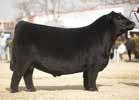






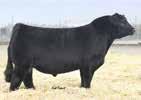





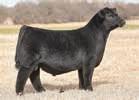



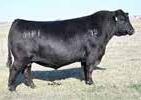


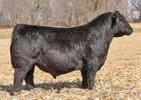
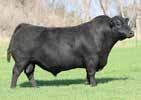


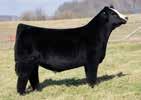
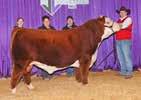

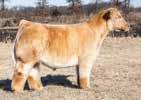

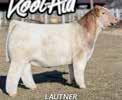

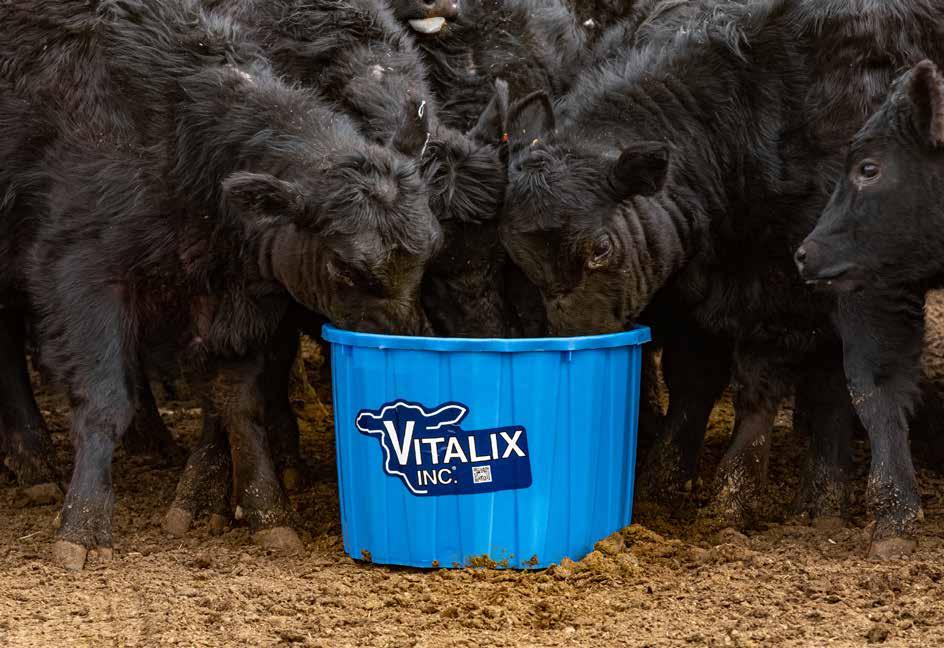



Health & Reproduction questions answered and explained.
contributed article by Dr. Vince Collison Collison Embryo and Veterinary Services, Rockwell City, Iowa collisonembryoservices.com
ne of the more common viral components of bovine respiratory disease we’ve encountered in the Midwest is Bovine Respiratory Syncytial Virus (BRSV). This virus is usually seen in calves anytime from 2-months of age through 9 to 10 months. It seems that this virus is common in Iowa during the summer months during times of excess heat and humidity.
It also is sometimes seen in feeder cattle as they start to get worked up on feed and are consuming more concentrates in their diet. Probably one of the more common situations where I’ve seen calves break with BRSV, is after calves return home from the state fair. Most times this is in younger spring born calves that are going out to show for the first time. Probably the combination of heat, exposure to cattle from multiple herds, waning maternal antibodies, low immunity for BRSV, and crowded conditions at tie outs make for perfect conditions for exposure.
This virus is one of the main reasons we recommend preconditioning calves prior to weaning. The
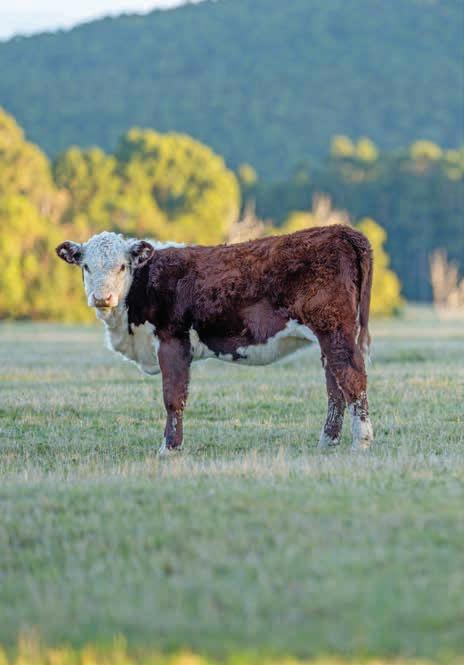
cases of BRSV I’ve seen in recently weaned calves that are not vaccinated are some of the toughest cases to treat and get resolved. Since it is a virus, BRSV will spread rapidly in a group and can be very non-responsive to antibiotic treatments.
Clinical signs include fevers that will go as high as 107 degrees Fahrenheit. This virus will cause severe inflammation in the bronchioles and alveoli tissue resulting in blockage of airways that causes a severe expiratory restriction in the lungs. This can result in air getting trapped in the lungs to the point of causing gas pockets to accumulate in the upper lobes of the lungs.
In addition, this inflammation damages the epithelium in the lung lining making the calf very prone to secondary bacterial infections such as Histophilus, Mycoplasma, and M. hemolytica. Also, BRSV is probably one of the tougher infections to vaccinate against, so this is the primary reason we recommend a booster of the 5-way viral vaccines 2 to 3 weeks after the initial vaccination. So, it is best to get calves preconditioned along with a booster prior to weaning. If the booster cannot get done prior to weaning, at least try to give a 5-way booster on the day they are weaned.
The other time we will see BRSV is in calves on pasture around late June to early July. For herds that experience this problem we like to get calves vaccinated as they go out to grass. These calves will also experience high fevers and often have open mouth breathing
and a hard time moving air in and out of their lungs. Dogma says not to vaccinate this young because of the interference of the vaccination from maternal antibodies. In these herds, we have found that the only way to control BRSV this young is to go ahead and vaccinate with a modified live 5-way vaccine. It has seemed to work even in the face of maternal antibodies in these herds.
In feedlots, BRSV can often break at about 30 days into the feedyard. The virus likes an acidic environment and as cattle get worked up on feed and experience some acidosis, it seems that cattle can be more prone to BRSV. In cases like this, it is probably best to back them off on grain until the cattle can be straightened out.
The diagnosis of BRSV is usually done off clinical signs and body temperatures. The best way we have found to diagnose BRSV through laboratory means is by running a PCR test on lung tissue from a posted calf. It is hard to isolate the virus, but the PCR test is good at picking up DNA evidence in the tissue.
If there are no calves to post, a good way to get a sample is from a tracheal wash. This procedure is fairly easy to do with the right equipment and multiple calves can be sampled. Tracheal wash samples can be used for PCR testing and also bacterial culture. Blood samples can also be drawn for antibodies for BRSV, but we have relied more on the PCR testing and bac-
terial culturing as these will give results quickly and are far easier to interpret.
When we treat BRSV, we rely on the usually used antibiotics that are approved for BRD in cattle along with supportive care. Anti-inflammatories are very important due to the increased immune response stimulated by BRSV. We will use NSAIDS such as Flunixin, but will also use a steroid such as dexamethasone. Dexamethasone is a potent anti-inflammatory that works quite well in cases of BRSV to open the airways. One thing about dexamethasone is that while suppressing the immune system is helpful for BRSV, it can be counter indicated in cases of IBR virus. It is probably best to work with your herd veterinarian to get a diagnosis before treating with steroids, so as not to do more harm than good.
BRSV is one of the more common viruses seen in cases of Bovine Respiratory Disease. Vaccination for BRSV with a follow up booster 2 to 3 weeks later can work quite well in controlling the disease. As always, work with your herd veterinarian to plan a vaccination program that will work best in your situation for control.
learn more collisonembryoservices.com
Dr. Vince Collison is co-owner of Collison Embryo and Veterinary Services PAC in Rockwell City, Iowa.
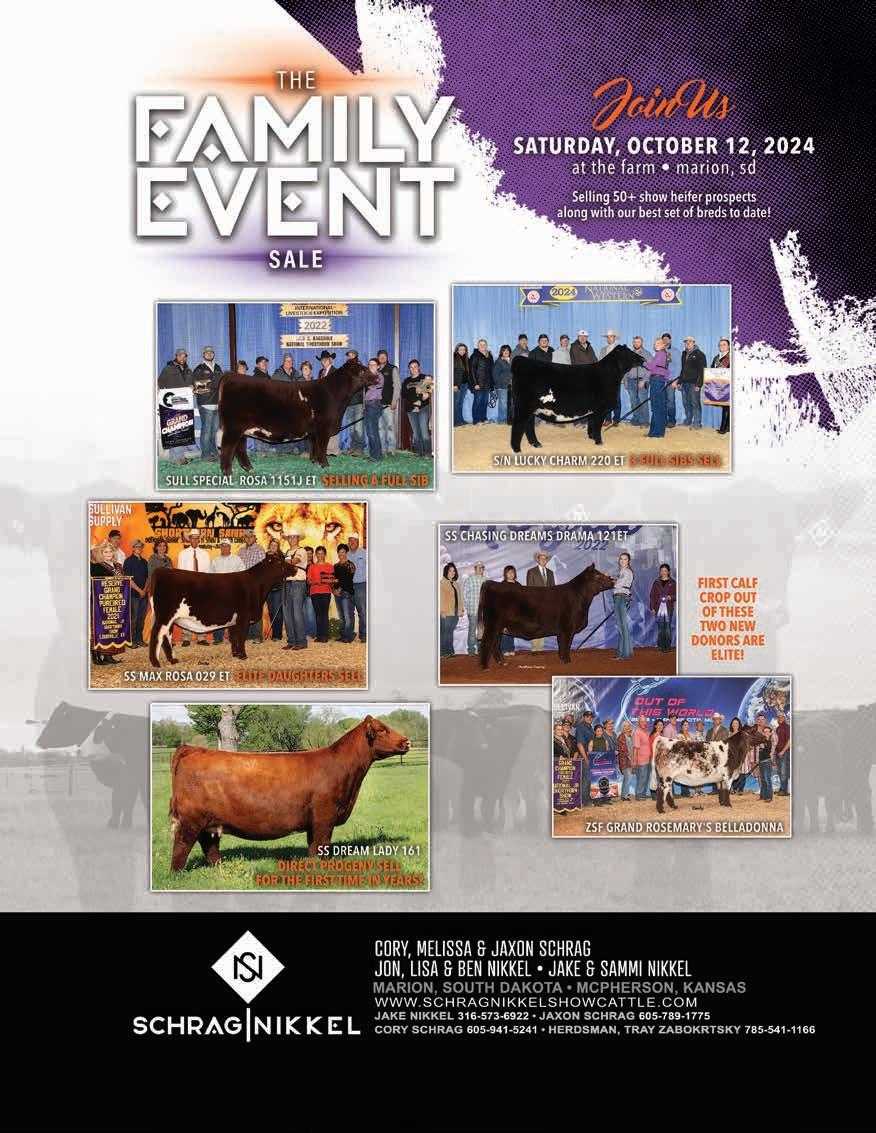
SAVE THE DATE:
DaKitch Farms & Rangeline Cattle
Fall Online Sale – October 4th smartauctions.co

Stop 1 – Load Buses at DaKitch Farms near Ada, MN 8:00-9:00 AM
Stop 2 – Krogstad Polled Herefords, Fertile, MN
Stop 3 – Polk County Fairgrounds: Displays by Lost Meadow Herefords, Morgan Sip, Walter Jones, Gib Mouser and more. Meal catered by SMOKEHOUSE.
Stop 4 – Rangeline Cattle, Daryl Rupprecht, Thief River Falls, MN
Stop 5 – Back to DaKitch to view and unload buses
DOOR PRIZES, GOOD FOOD & GOOD CATTLE IN THE NORTH!
To reserve bus and meal, contact: Matthew Kitchell at 701-799-7690
Watch Minnesota Hereford Breeders website for information: www.minnesotaherefordbreeders.com
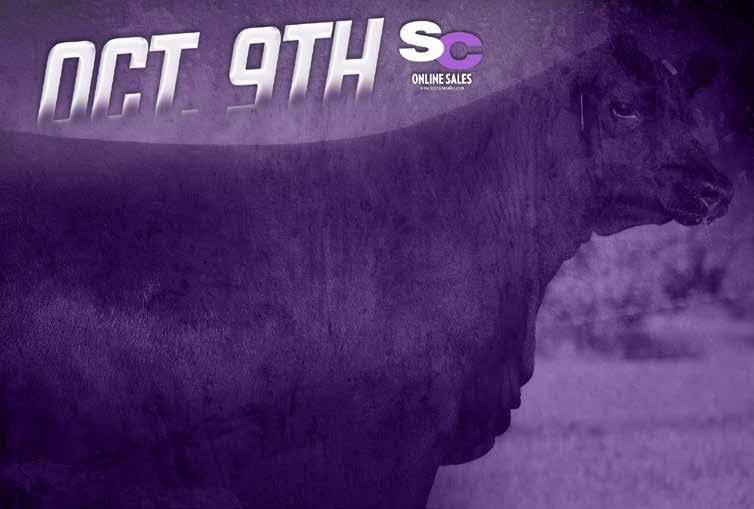




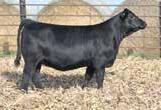


















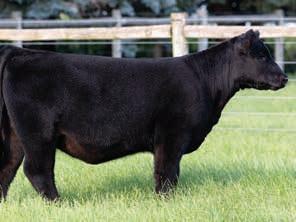








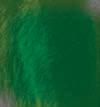











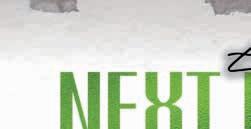
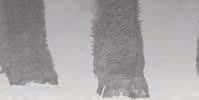

















































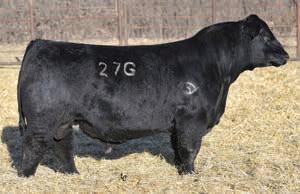

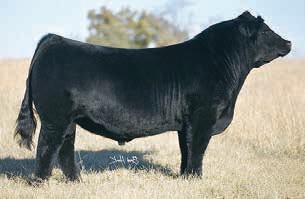

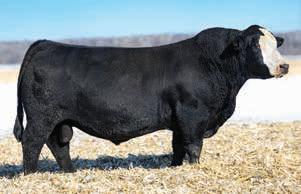




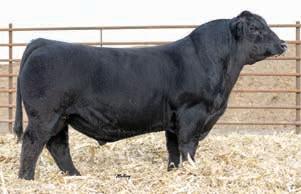









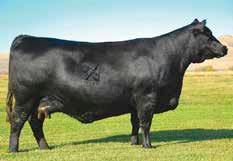
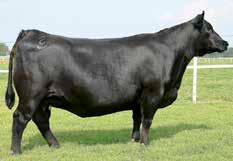

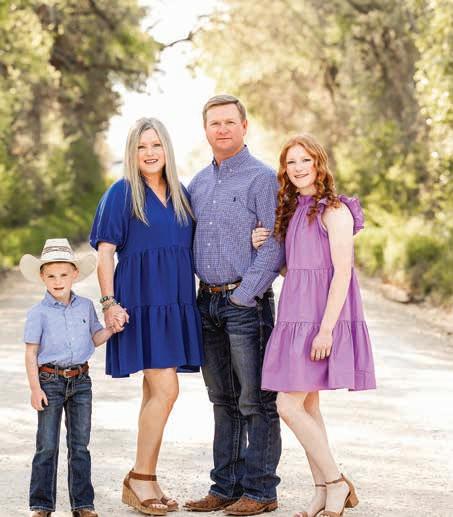
In the kitchen with
Wilks Ranch - Eastland, Texas

My name is Krystal Kiser, and I was born and raised in Alpine, Texas. I attended Tarleton State University, in Stephenville, Texas, where I earned a Bachelor of Science degree in education. I am married to Aaron Kiser, and we have two incredible kids together who continuously keep us on our toes. Kaylan is 18 years old and will be studying animal science as a freshman at Texas Tech University. Kazz is 6 years old and will be starting kindergarten. As a family, we enjoy spending time together in the show barn and ring. I have been very blessed to be able to be a stayat-home mom where I try to juggle everything from homeschooling to house chores and show barn duties. Aaron is the Angus seedstock manager at Wilks Ranch, where he strives to supply the country with Angus cattle which traits showcase quality breeding and genetic superiority. He has been with Wilks Ranch since the seedstock program was started over 11 years ago. Wilks Ranch annually hosts a female and bull sale at their sale facility in Eastland, Texas.
Wilks Ranch has blessed and provided us with so many opportunities over the years. As a family we have been truly honored
What is your least favorite job in the kitchen?
My least favorite job in the kitchen is the cleaning up of everything. I dread it even before I make a big
Cowboy approved recipes used by our favorite country cooks.
When I was little, I had no interest in learning how to cook. I was more interested in what was going on in the barn. Once I got married, I quickly realized that I would have to learn a thing or two. Over the years, I have had a lot of help from my mom, sister-in-law, and friends. I still find myself calling them and asking for advice and new recipes.
What is your favorite cooking tip/trick?
My favorite cooking tip is simple but seems to be overlooked frequently: Read the recipe thoroughly before you start and ensure you have all the ingredients it calls for.”
What is your most requested dish?
My most requested dish is chicken fried steak and cream gravy. My family would love it if I made this once a week.”

1 can creamed corn
1 can whole kernel sweet corn (don’t forget to drain it)
1 box of Jiffy corn muffin mix
8 ounces of sour cream
1 stick of butter melted
Krystal Kiser
1 cup of shredded cheddar cheese (I usually add in more because we love cheese and I prefer to shred my own cheese because it makes it creamier and more flavorful.)
Note: If you prefer a sweeter corn casserole, you can add up to 2 tablespoons of sugar to the mix.
Step 1. Preheat oven to 350 degrees Fahrenheit. Step 2. In a large bowl, combine all in- gredients except the cheddar cheese. Be sure to drain the whole kernel corn. Step 3. Pour into a greased 9x13 inch casserole dish. Step 4. Bake uncovered for 45 minutes. Step 5. Top with shredded cheddar cheese. Bake for an additional 10 to 15 minutes or until the top begins to brown. Step 6. Let stand for 5 minutes prior to serving.
Krystal Kiser
Female Sale: October 17, 2024, at 6:00 PM
Bull Sale: November 12, 2024, at 1:00 PM
Krystal Kiser
3 to 4 cans beef broth
1 can mild Rotel
1 can whole kernel sweet corn
4 medium-sized peeled and diced potatoes
2 cups frozen green beans
2 cups dried egg noodle pasta
1 can minestrone soup
1 can ranch style beans
1 pound ground hamburger
Shredded cheese (for topping)


2 cans crescent rolls (larger size)
2 packages of 8-ounce cream cheese
2 cups powdered sugar

1 teaspoon vanilla
2 cans cherry pie filling (you can use other flavors)
1 stick melted butter sugar and cinnamon
Step 1. Unroll 1 can of crescent rolls and place in the bottom of a greased 9x13 inch pan. Step 2. Mix cream cheese, powdered sugar, and vanilla. Then, spread it over the top of the dough. Step 3. Pour pie filling on top of cream cheese mixture. Step 4. Top with the remaining can of crescent rolls. Step 5. Drizzle melted butter on top of dough. Step 6. Sprinkle sugar and cinnamon over the top. Step 7. Bake at 350 degrees Fahrenheit for 45 minutes or until done.
Step 1. In a 5 to 8-quart pot, put in 3 cans of beef broth, 1 can of mild Rotel, 1 can of whole kernel sweet corn, and the peeled and diced potatoes. Bring to a boil over medium to medium-high heat. Boil for about 20 minutes or so. Step 2. While that is boiling to soften the potatoes, season and brown the ground hamburger meat in a separate skillet. Season the ground hamburger with garlic salt, onion powder, and coarse ground pepper. Step 3. Once the ground hamburger is browned, drain off the excess grease and return the meat to the skillet (Be sure to turn off the burner where you cooked the meat). Step 4. Continue to boil the pot contents until the potatoes have softened. Step 5. Add in the frozen green beans and dried egg noodle pasta and stir well. Let that cook for about 5 to 10 minutes. Step 6. Add in more beef broth if needed. Step 7. Add in the can of minestrone soup, ranch style beans, and browned hamburger meat and stir well. Step 8. Turn the temperature down on the stove to simmer heat and continue to cook for 10 minutes. Step 9. Let stand for 10 to 15 minutes prior to serving. Step 10. Add shredded cheese to the top of the served-out portions.



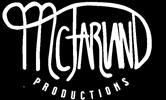
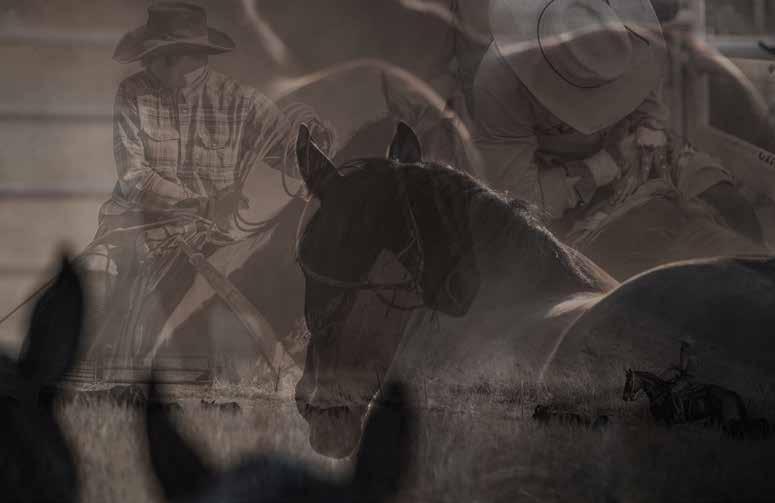


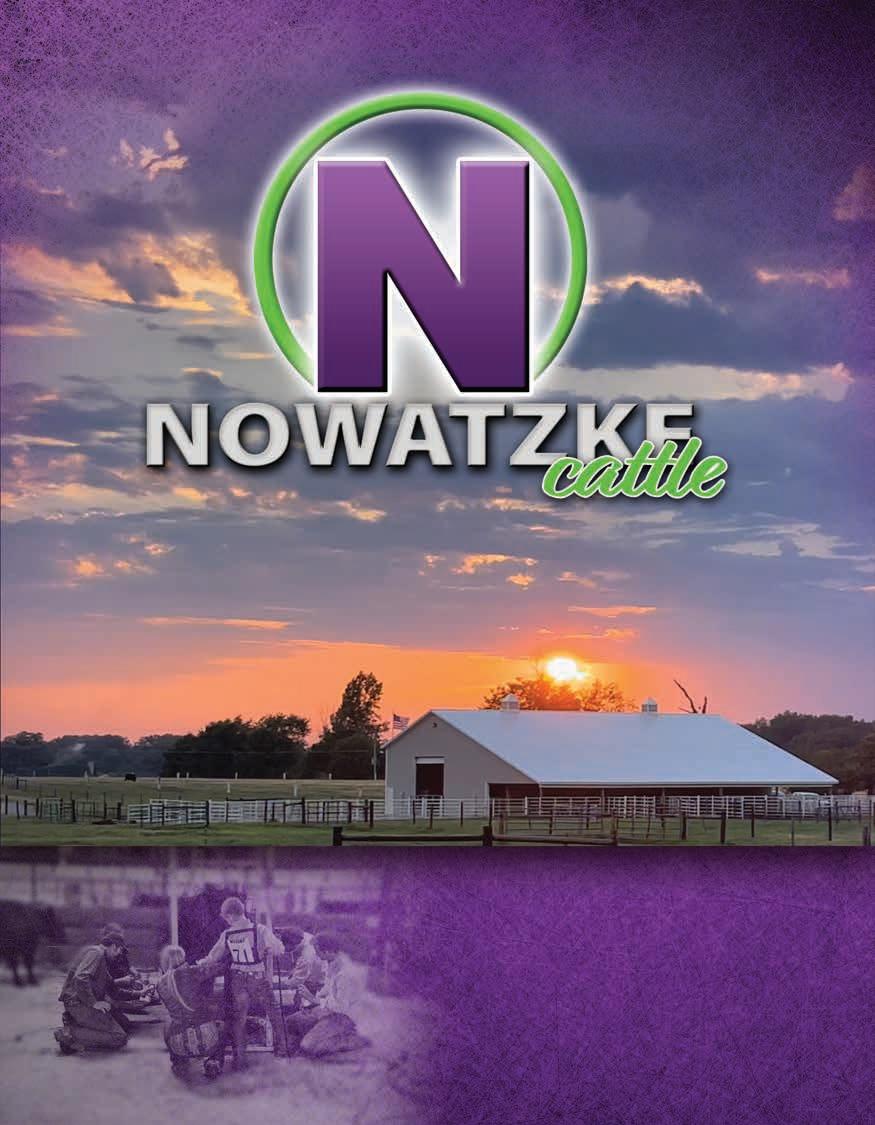







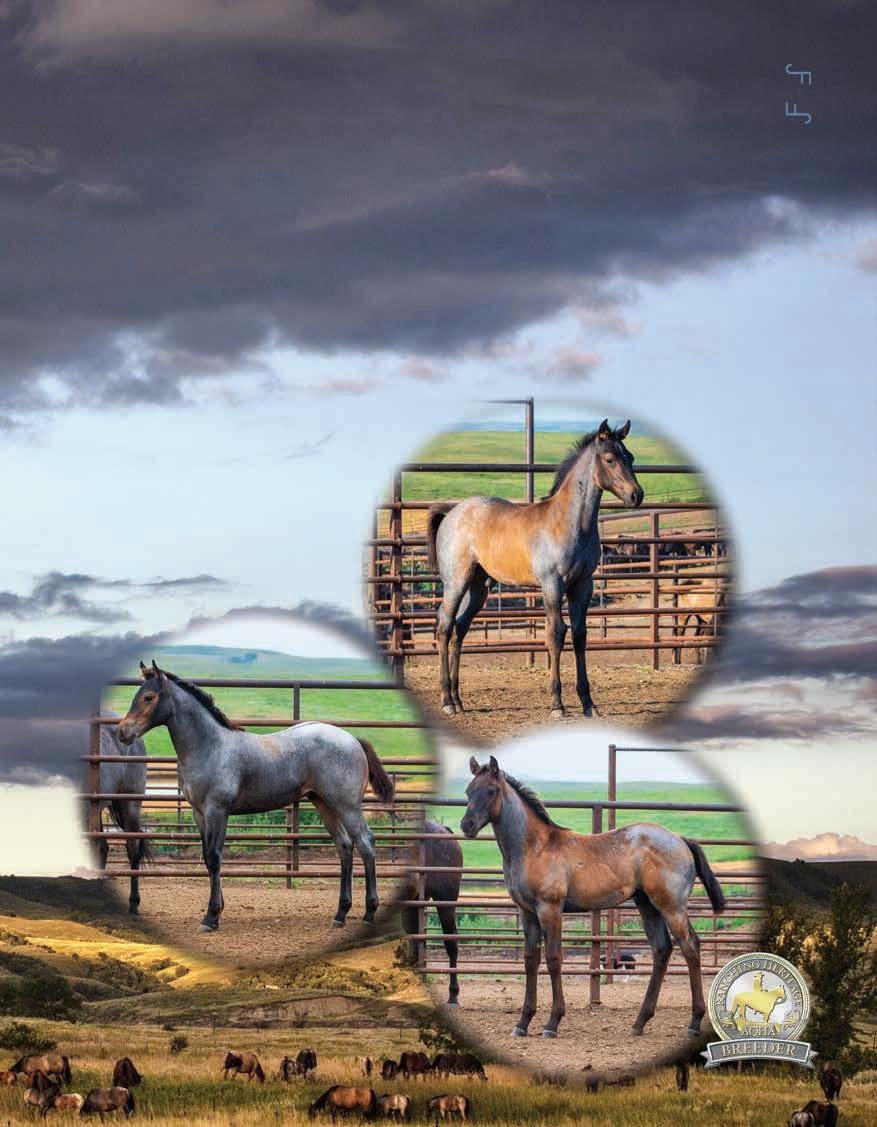




































































SIRES REPRESENTED IN THIS UPCOMING SALE:



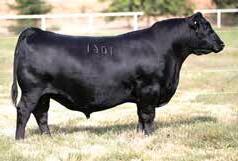

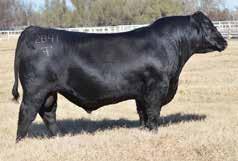
HEIFER PREGNANCIES: Fall Pregnancies (EXAR Rita 2828 20446954 X Gettysburg) / (EXAR Rita 2264 20398174 X Gettysburg) (Choice of FF Rito Ambitious Spring Pregnancies various donors) FEATURED DONORS: Pollard Lucy 1015 19945901 - Spring Pregnancy (1015 X 44 Faithful/Hollywood/Jordan)

s I wrote this article, we have received our first snowstorm of the winter and my four little ones could not wait to throw on their snow pants and go play in the white stuff! Me on the other hand, not so excited about leaving the warmth and comfort of my office. It is because they are looking forward to joy and fun and I am dreading frozen waters and/or sick cattle. Either way, it is safe to say that winter is upon us!
A review of the current cattle market.
this fat cattle deal to continue an upward trend going into the new year and into spring. How high we can go, that is the million-dollar question!
contributed article by Kirk Lynch Lynch Livestock Inc. and Humeston Livestock Exchange, Humeston, Iowa humestonlivestockexchange.com
Now to look at some of the market reports that we have been seeing in the barns. The fat cattle market has been on a hot streak for several weeks, until this past week, when we experienced a slight dip in the market. We have seen some highs in the mid to high forties, but these have been some extremes. Most cash cattle in the country have been trading at forty level or slightly higher the past couple of weeks. I expect there to be a few bumps in the road, but I expect
ir Isaac Newton is famous for saying, “What goes up must come down”. Well, that seems to be the trend we have been seeing over the last month or so on the cattle mar kets. In all, the markets are still very strong and according to the total cattle head count numbers we should all still be very bullish on the cattle markets. It has all been outside factors that have been the cause in the downward trend we have seen.
The dip in the market on the feed er cattle is more of a much-needed correction in the market than any thing. Feeder prices have been sky high for the better part of the past year, and it has been very hard for feedlots to find cattle that would project in the black even with fu ture prices in the $180’s and $190’s.
The higher fat cattle market is driving a higher price for the feeder cattle market as well, even with the higher feedstuff inputs. We have seen some front end big strings of 800 pounds bringing well into the sixties and some 600-pound cattle bringing into the seventies and eighties. Once again these are some extreme tops. We have been trying to fill up our own lots as fast as possible, as I am not sure the feeder cattle are going to get any cheaper. We have been able to find cattle at cheaper prices than that and so when we do projects they are in the black.
The cull cow and bull market has lagged the fat market, as from all reports there have been around six
Kirk Lynch, Lynch Livestock Inc., Waucoma, IA Kirk is the Beef Division manager for Lynch Livestock Inc. and oversees all aspects of their backgrounding and cattle feeding operations throughout Iowa and Kansas. He is also deeply involved in the newly reopened Humeston Livestock Exchange in Humeston, Iowa. In addition, Kirk and his wife Mary own and operate Heartland Simmentals in Northeast Iowa, which is a seed stock operation that consists of 500 registered Simmental and Angus cows. They have four children: Gabrielle (8), Brayden (7), Vivian (5), and Bianca (1).
There have been some year ling/grass cattle starting to move and the steers are still bringing a pretty good ticket. Seeing some 900-pound steers still bring in that $255 to $260 range and with heifers being $15 to $20 back. Not many light calves moving which is common for this time of the year, but still seeing several 500-to-600pound cattle bringing on either side of the $3 mark. There will be several calves that obviously start moving after Labor Day, it will be interesting to see how quickly the

Humeston, Iowa 641-877-6092


percent more last year, making supply of cows. down, which be into next year, cow and bull with the same market.
The breeding been up and cently, I heard commercial pairs $2,000 and then can buy all the I want for $1,200 are looking to now is the time reasonably priced with increased are going to be ply over the next Wishing everyone Christmas and
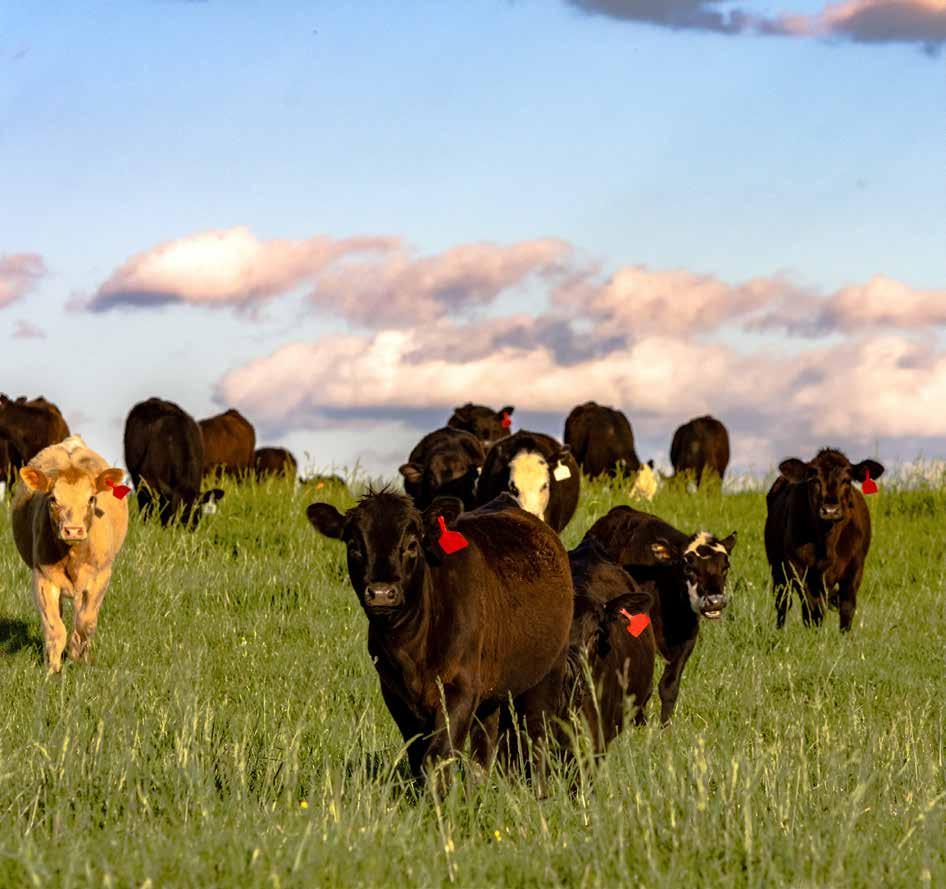
rebuilding yet. Seeing some fall bred heifers bringing in the low $3,000 and cows depending on age and quality bringing $2,200 up to $3,000.
Summer is just about overfootball, school, and fall is upon us. Wishing everyone a safe harvest and wonderful fall, until next month!



Rockwell City, Iowa
Dr. Timothy Collison - 712.395.0169
Dr. Vince Collison - 712.830.5119 Follow

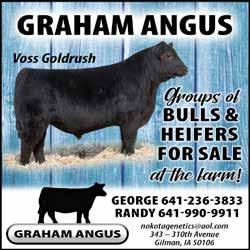


Addressing hidden impact of stress on beef and dairy cattle. Top animal health sales and marketing leaders excited to create believers in new stress reducing solution.
FERA Diagnostics & Biologicals announces Heath Landis and Jeff Baxter, recognized sales and marketing leaders in the animal health industry, have recently joined this innovation company to support the adoption of FerAppease® by veterinarians and their beef and dairy producer clients.


As the US National Sales Director for FERA, Landis will lead sales force engagement with distribution partners, veterinarians and their beef and dairy producer clientele to position the use of FerAppease in reducing stress in their cattle during times of handling, transportation and commingling. With over 25 years in the animal health industry and previous sales and leadership experience with MULTIMIN USA/Axiota Animal Health, Landis has built strong relationships with key distributor partners, bovine veterinarians and producers in all segments of the beef and dairy industries. With a solid background in simplifying the understanding of the science behind a product to deliver value to producers, Landis will be instru-
mental in expanding the adoption of FerAppease to address the health and economic impacts of stress on cattle that occurs in specific management situations. “Joining FERA Diagnostics & Biologicals is a great opportunity, as this is an exciting time for introducing the health and economic benefits of FerAppease to reduce stress in cattle and with a product I not only truly believe in, but also feel there is a tremendous need for in our industry,” says Landis.
Baxter has 20 years of science-focused marketing experience with multi-national animal health companies and diagnostic startups all focused on the bovine industry assuming the role of Marketing Director for FERA. Most notably launching the Vista® vaccine line for Intervet Inc. (now Merck Animal Health), Baxter collaborated with technical service peers and the research and development team to define new expectations with bovine veterinarians regarding the understanding of immunology and vaccinology. Having global business development experience for building awareness of bovine diagnostic solutions, Baxter has been successful in simplifying the understanding of the science behind products that translate into benefits for customers. “In visiting with multiple veterinarians and progressive producers who have seen the stress-reducing results in their cattle by using FerAppease, this has made me a believer in the product,” says Baxter. “Joining FERA at this exciting time for introducing the health and economic benefits of FerAppease to reduce stress in cattle is something I have been looking forward to being a part of my entire career”.
Launched in 2022 by FERA, FerAppease is a synthetic analog
of the active ingredient Maternal Bovine Appeasing Substance (MBAS). MBAS is a naturally occurring substance that is secreted by the skin of the mammary gland of lactating animals, reducing stress in cattle treated. To use FerAppease, no veterinarian prescription nor Veterinary Feed Directive plan is required, and there are no meat or milk withholding requirements. “With the sales and marketing expertise and passion Heath and Jeff bring to their leadership roles with FERA, I believe there will be no limit to what we can accomplish helping veterinarians and their beef and dairy clientele appreciate the value they will recognize from using FerAppease,” states Dr. Rodrigo Bicalho, Founder and Chief Executive Officer of FERA.
FERA Diagnostics & Biologicals is a privately held animal health company based in College Station, Texas. Combining innovation and science, FERA has introduced FerAppease to address the hidden health and economic costs of stress on cattle. To become a believer in FerAppease and for more information visit: www.feraah.com.
Junior Angus members and Association staff collected pop tabs, and junior board members volunteered to support families in the greater Madison, Wisconsin area.
National Junior Angus Association (NJAA) members rallied behind the mission of supporting families and took part in the 2024 Angus Impact project, where pop tabs, meals and gift cards were


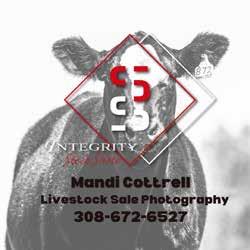

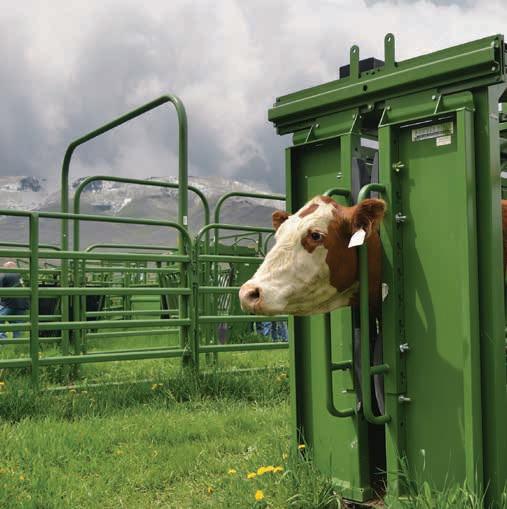

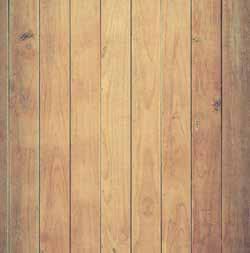
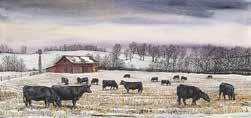






(continued...)
donated to the Ronald McDonald House Charities of Madison, Wisconsin. Eighteen states collected 652 pounds of pop tabs, totaling $326, the single-largest donation to ever be made by one organization at the Madison Ronald McDonald House.
National Junior Angus Board (NJAB) vice chairman, Lauren Gilbert led the Angus Impact project this year and said she was in awe of the amount of pop tabs collected by the NJAA.
“It was incredible to see how many people had turned up with so many pop tabs,” Gilbert said.
Prior to the start of the 2024 National Junior Angus Show (NJAS), NJAB members served 35 meals, donated by Certified Angus Beef, to residents on June 28.
“Food brings people together and that’s huge, especially during times of need,” Gilbert said. “It was really awesome to be able to help prepare and serve a nice, healthy, nutritious and tasteful meal during a time that they really need it.”
July 2, during the NJAS, the Illinois Angus Auxiliary coordinated a 5K “Glow Run” raising another $500 for the Ronald McDonald House. Additionally, 35 $10 Sub -
way gift cards were donated.
“We really can’t keep our house doors open without people doing generous acts like the NJAA did,” said Sophia Melgar, volunteer and operations manager at Ronald McDonald House Charities of Madison. “Really, we can’t say thank you enough.”
The goal of the Angus Impact project is to help better the lives of others through acts of kindness to families staying at the Ronald McDonald House.
Melgar said within her time as a staff member at the House, she could not think of another organization that has gone above and beyond quite like the NJAA did.
Angus Impact is the official community service program of the NJAA. The goal of the project is to help state junior associations be the change through acts of service. To view results of the 2024 NJAS, including shows, contests, awards and scholarships, visit www.njas. info.
Additional coverage is also available on the NJAA Facebook page and in the September issue of the Angus Journal.
– Written by Megan Clark, Angus Journal



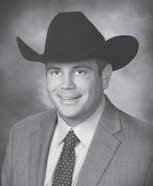



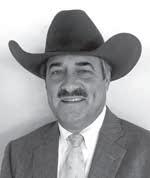


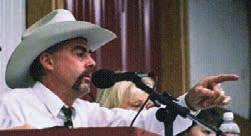



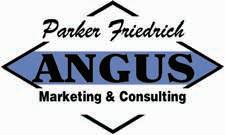

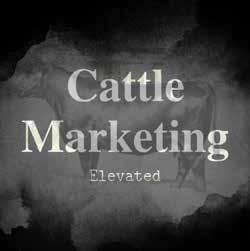


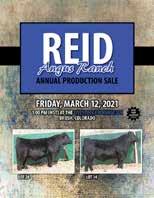
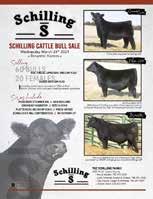

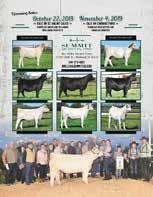



flyers. brochures. catalogs. postcards. mailers. business cards. you name it! Contact us for a quote! makayla@stockmanmag.com
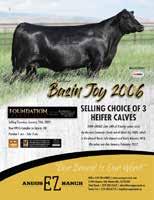
ADR Cattle Co.
Bayou Creek Ranch
Berg’s Shorthorns
Blue Lake Plastics
Carrousel Farms
Cattle Visions
CJ Brown Studios
Collison Embryo
Connor AgriScience
Conover, Al
Conover, Jeanne
Crawford, Scott
CSL Auctions Inc.
Destiny Angus
Double B Angus
Fawcett’s Elm Creek Ranch
FERA Diagnostics & Biologicals
Friedrich, Parker
Froelich Legacy Quarter Horses
Gilchrist, Kyle
Gold Buckle Cattle Services
Graham Angus
Gutwein Angus
Hawkeye Breeders Service
Herbster Angus
Humeston Livestock Exch.
Illini Elite Sale
Integrity Stock Shots
J.J. Scheckel Angus
Janssen Angus
Layton, Dustin
Liberty Mutual Insurance
Linz Heritage Angus
Little Creek Cattle
Lowderman, Monte
Lowderman Auction Options
Lowderman Cattle Company
Matthews Coach’s Corral
McFarland Productions
Mid Continent Farms
MN Hereford Breeders Tour
Money Maker bull
Muir Embroidery
Nowatzke Cattle
Oakdale Farms
Open
Rafter Ranch
Pembrook Cattle Co.
Pleasant
Raymond Sutton Ranch
Renovo Seed
Safety Zone Calf Catchers
Schooley Cattle
Schrag/Nikkel Show Cattle
Sierra Ranches
Slate Group
Soaring Eagle of the Ozarks
Star G Ranch & Friends
Stockman Design Services
Tehama Angus Ranch
The Judge Source
The Next Episode Sale
Thomas Ranch
Valley Oaks Angus
Vitalix Inc.
Volk Livestock
Voss Angus
Wall Street Cattle Co.
Weaver Quarter Horses
Weishaar, Seth
Westway Feed Products
Wilks Ranch
Y-Tex Corporation
ZWT Ranch


About the Stockman.

I operate Nowatzke Cattle with the help of my family. Our Angus show and performance cattle operation is headquartered on my childhood farm in Michigan City, Ind. I have personally been raising cattle for 38 years. Along with my family, I hope we can continue for many more.”
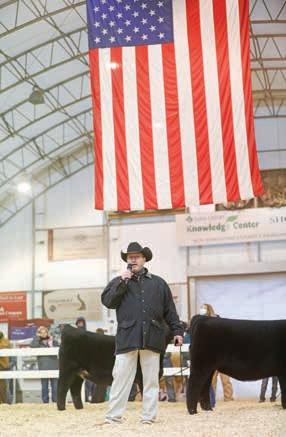


Describe your best day.

We have been blessed and have had many good days on the farm throughout the years. But if I was to pick a best day that happened on our farm, I would choose the day of our 2023 annual production sale. This sale was a record setting sale that by far exceeded any expectations I ever had. We sold cattle from coast to coast. We were very humbled to have some of the top Angus breeders in the country participate at our sale. We were also humbled to have some of the very best show families in the country here as well. What an awesome day it was!!”
Your go-to sorting apparatus?

My go to sorting apparatus is just a plain, old fiberglass sorting stick.”
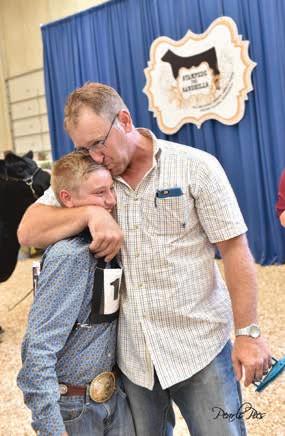

What is the most used tool on your farm? How old is it?

The most used tool on our farm is our feed truck. We use this truck like it’s a tractor, like it’s a hay hauler, like it’s a feed wagon, and like it’s a four-wheeler to chase cows, and much more. We would be lost without them. We actually have two feed trucks; one is a 2016, and one is a 2011. I always say Chevy should come to our farm and do a commercial promoting their trucks.”
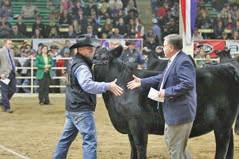
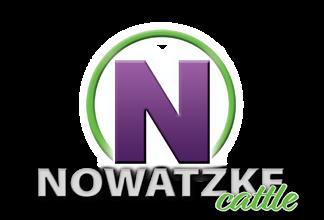
The most important lesson you’ve learned in this business?

I believe the most important lesson I learned in the cattle business is that ultimately this is a people business. Creating relationships with fellow cattlemen is what this is all about. There are a lot of good cattle being bred and sold all throughout the country. Therefore, taking care of customers and creating good, long-lasting relationships is very important. Some of my closest friends are people I have met through the cattle business.”
What is your least favorite job on the farm?

I do not believe I have one single least favorite job on the farm. There are several I don’t look forward to. Some of them are unplugging a chopper, trimming feet, finding an electrical short, fixing a trailer plug for the second time in a week, figuring out why the electric fence isn’t working, thawing a frozen waterer, looking for tools that didn’t get put back, finding all the halters used to tie up gates, and so on.”
Your favorite non-farm activity to do in your free time?

My favorite non-farm activity in my free time would be spending time with my family.”
Saturday, October 19, 2024 Michigan City, Ind.
What about the beef cattle industry excites you the most?

The thing I’m excited about in the cattle business is to try to make that next “ONE”, the next AI sire, the next national champion female or the next donor that has both elite EPDs and elite phenotype. I do agree with the many breeders who say there’s never been a perfect one, but it sure is fun to try to make that one.”
